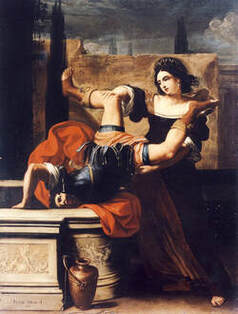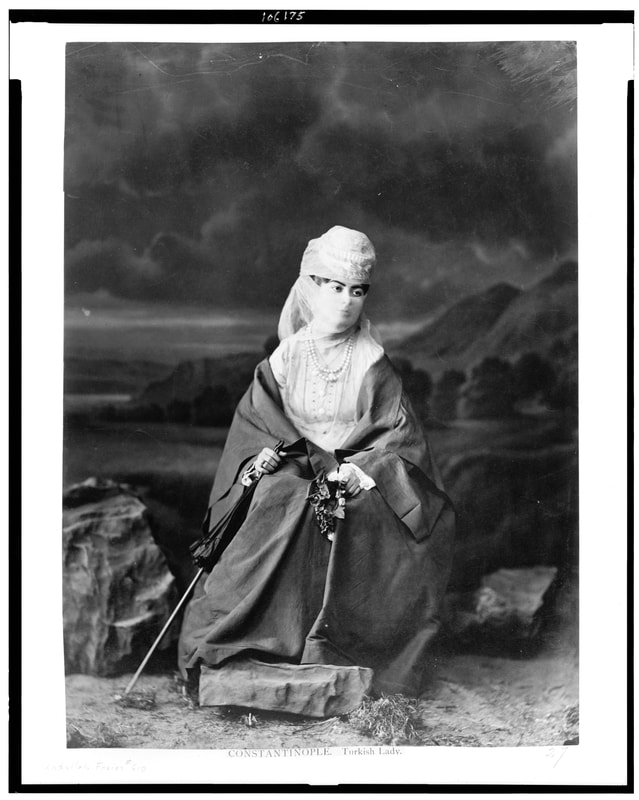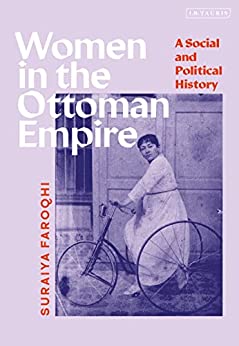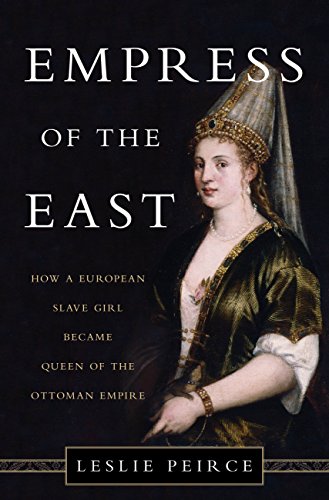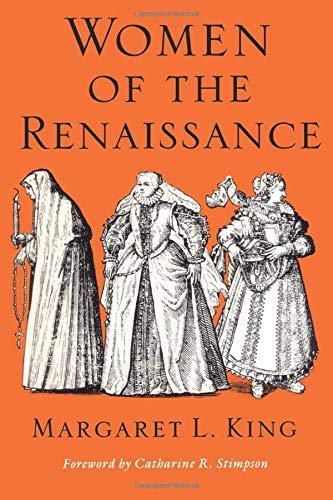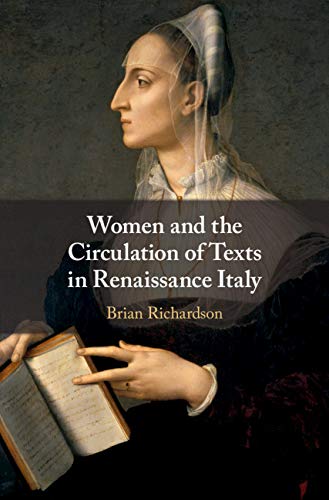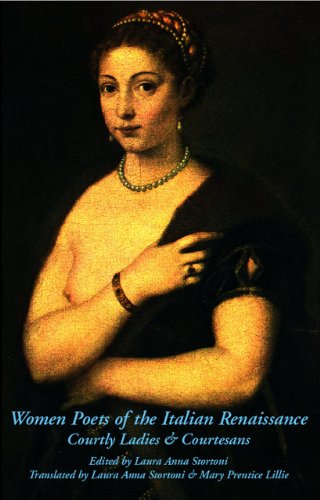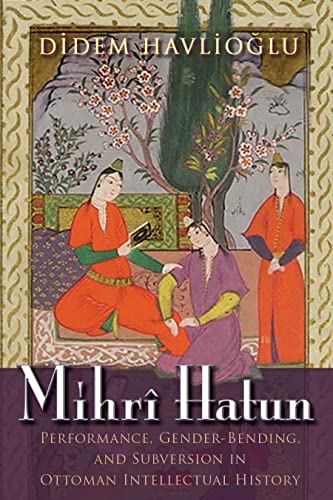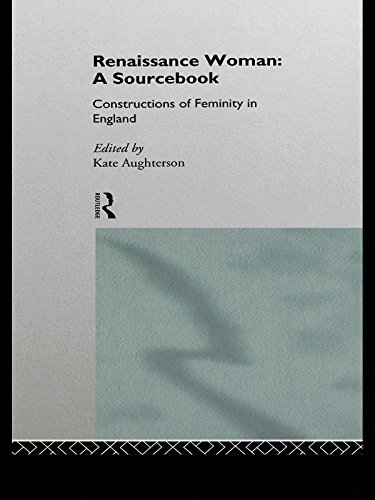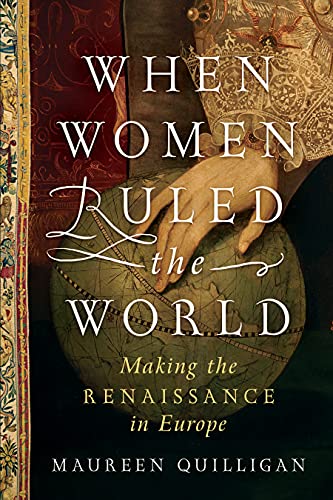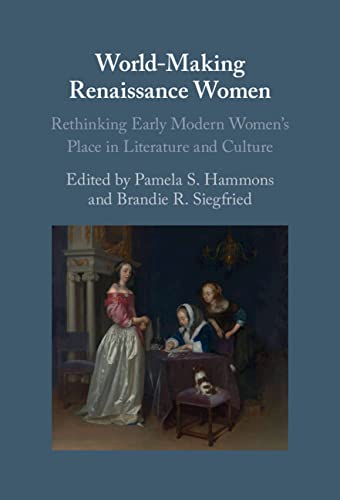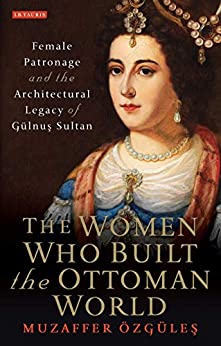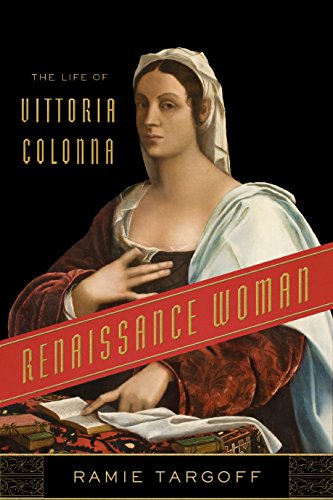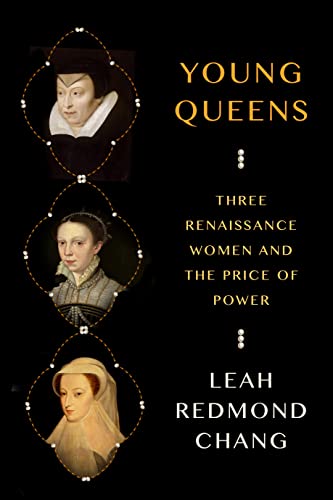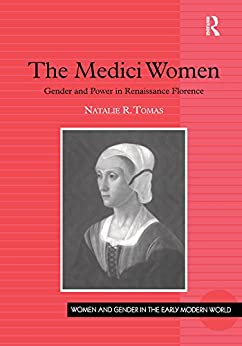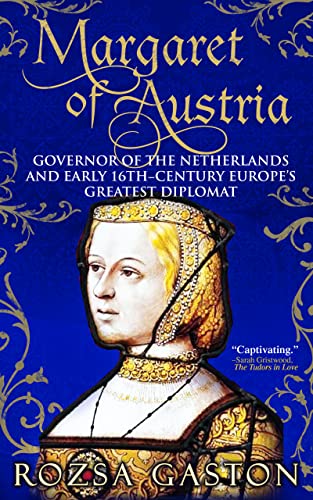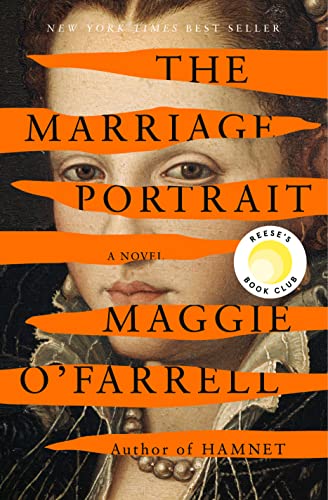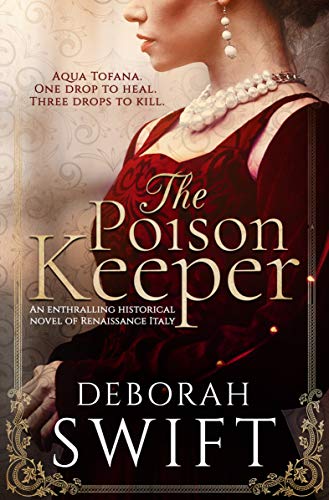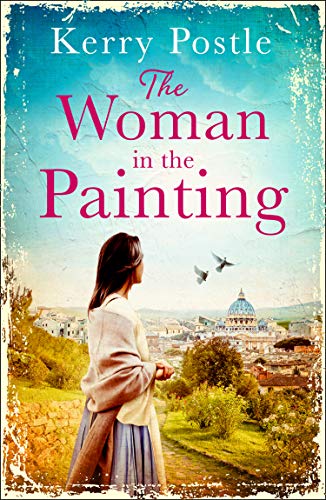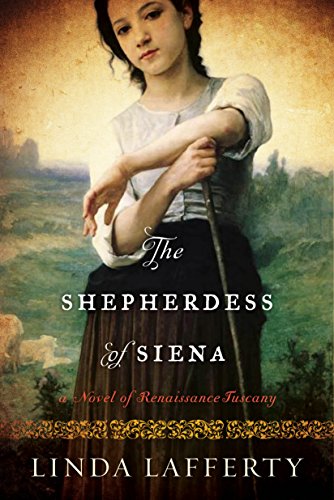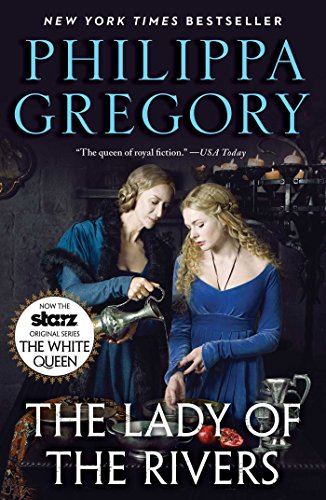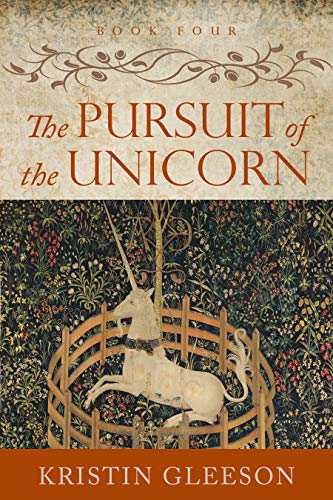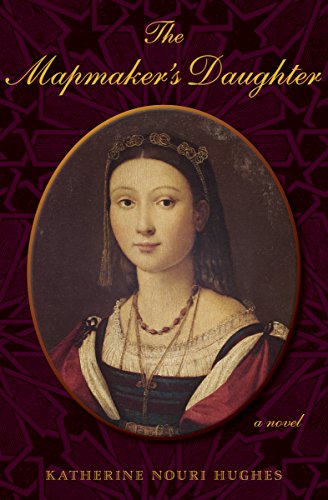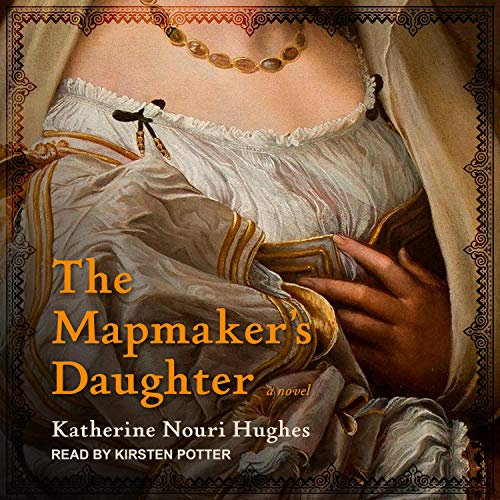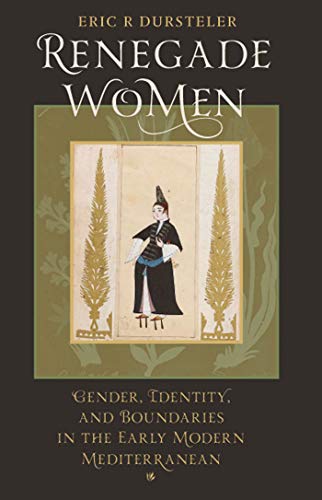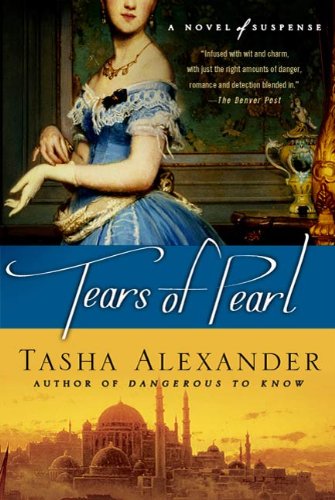16. 1300-1500 Renaissance and Ottoman Women Artists and Thinkers
|
The term “Renaissance Man” brings to mind male artists, musicians, and scientists However, no names of women painters or sculptors are as widely or well known by the public, despite their talents and influence on the cultural landscape of Europe. This section seeks to showcase women's artistic contributions to the renaissance from all over the world.
|
Between 1380 and 1580 in Europe, after the plagues and the Mongols had wreaked havoc on Eurasia, societies across the continent experienced a period of rebirth. In Europe, this period has been called a Renaissance. In the Middle East, the period also saw an Islamic Golden Age under the Ottoman Empire. Building on earlier exchanges with the Silk Road, the Islamic world, African cultures, and Europeans turned their attention to their classical past and sought to rebuild it. Women were eager to take part in this endeavor, battling against long-held cultural norms that tried to hold them back.
Europe
The term “Renaissance Man” usually refers to a self-made man or a man who has mastered skills in everything from academic work to swordplay. In truth, the Renaissance Woman was more likely to be a patron of the arts in this period. This was a result of the lack of opportunities for women to get an education or training. Erasmus of Rotterdam, the most famous proponent of new learning in this time, made the prevailing view of women’s education clear when he wrote, “I do not know the reason, but just as a saddle is not suitable for an ox, so learning is unsuitable for a woman.”
Renaissance society preferred women chaste and in their traditional roles, and laws were established to keep women bound to domesticity. Even women’s clothing choices were taxed in a way to limit their sexual expression, “All women and girls, whether married or not, whether betrothed or not, of whatever age, rank, and condition...who wear or wear in future any gold, silver, pearls, precious stones, bells, ribbons of gold or silver, or cloth of silk brocade on their bodies or head for the ornamentation of the bodies...will be required to pay each year...the sum of 50 [coins].”
As society opened to innovation, the new academies and workshops were reserved for men. Wealthy women or the daughters of scholars and artists enjoyed more freedom to learn and to express themselves, but this happened mainly at an individual level. The best-known women of the era were women of influence who used their positions to influence and support the artists of their choosing.
Europe
The term “Renaissance Man” usually refers to a self-made man or a man who has mastered skills in everything from academic work to swordplay. In truth, the Renaissance Woman was more likely to be a patron of the arts in this period. This was a result of the lack of opportunities for women to get an education or training. Erasmus of Rotterdam, the most famous proponent of new learning in this time, made the prevailing view of women’s education clear when he wrote, “I do not know the reason, but just as a saddle is not suitable for an ox, so learning is unsuitable for a woman.”
Renaissance society preferred women chaste and in their traditional roles, and laws were established to keep women bound to domesticity. Even women’s clothing choices were taxed in a way to limit their sexual expression, “All women and girls, whether married or not, whether betrothed or not, of whatever age, rank, and condition...who wear or wear in future any gold, silver, pearls, precious stones, bells, ribbons of gold or silver, or cloth of silk brocade on their bodies or head for the ornamentation of the bodies...will be required to pay each year...the sum of 50 [coins].”
As society opened to innovation, the new academies and workshops were reserved for men. Wealthy women or the daughters of scholars and artists enjoyed more freedom to learn and to express themselves, but this happened mainly at an individual level. The best-known women of the era were women of influence who used their positions to influence and support the artists of their choosing.
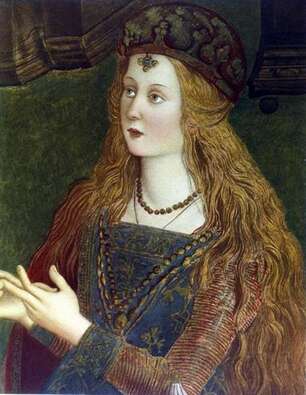 Portrait of Lucrezia Borgia, Bridgeman Images
Portrait of Lucrezia Borgia, Bridgeman Images
Lucrezia Borgia
One of the most famous of these is also one of the most controversial. Lucrezia Borgia is sometimes described as the “Mafia Princess” of the Renaissance, and there’s no denying that her corrupt, politically powerful family used her to make the most of opportunities for alliances. Lucrezia’s father was the Catholic Pope, a position that was at that time more king-like than a religious calling. Rodrigo Borgia had seen to his daughter’s education. By the age of 12, she could speak six languages and had been tutored by some of Europe’s leading Humanist scholars. Lucrezia’s father lost no time in arranging her first marriage when she was just 13, but he had that annulled as soon as a better match presented itself. Lucrezia was said to have loved her second husband, but her father attempted to annul that marriage as well, and she resisted. Not long after, her young husband died mysteriously. Fortunately for Lucrezia, her third marriage to Alfonso d’Este, the Duke of Ferrara, lasted. When Lucrezia’s father died in 1503, the political intrigue ended, and she was free to create the courtly society she had always dreamed of. As Duchess of Ferrara, Lucrezia supported poets and musicians, made pious and charitable donations to the community, and even oversaw administrative duties when her husband was away.
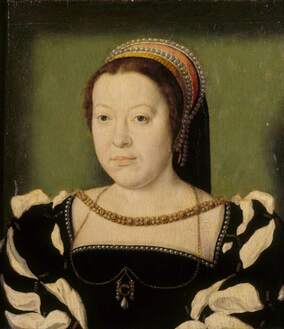 Portrait of Catherine de Medici, Art UK
Portrait of Catherine de Medici, Art UK
Catherine de Medici
Catherine de Medici was similarly controversial, but she had a more political power and influence than Lucrezia Borgia.. Like the Borgias, the Medici were no strangers to political intrigue, and Catherine was destined to add to their legacy. She spent part of her youth at the Vatican because her uncle was Pope at that time. As it had been during the days of the Borgia, Rome was a thriving Renaissance hub. In 1533, Catherine was married to the French king, Henry II, in order to solidify an important alliance. Only 14 at the time of her marriage, Catherine spent her time at the French court expanding her education and bonding with the ladies of the palace. Although Henry is said to have ignored her for much of their marriage, Catherine tried to ingratiate herself to the king and his entourage. Once she began to have the crown-prince’s children, her position was more secure. Although Catherine frequently had to compete with Henry’s mistress to get attention at court, she was gradually able to assert her position. When Henry was killed in a jousting tournament in 1559, Catherine was ready to take over.
Women in France could not legally rule in their own names, so Catherine influenced political affairs as the Queen Mother while her sons were still young. One of her biggest concerns was maintaining order between factions divided between Catholic and Protestant forces. Catherine sought a moderate policy towards Protestants, who were considered heretics in France at the time. When her son Francis died at the age of 16, Catherine served as regent because the next prince in line for the throne, Charles, was only 10 years old. She remained in power when Charles inherited at age 14, and they planned a Grand Tour of the kingdom to celebrate a new era. The tour featured a Renaissance festival at every stop during which plays, artistic exhibits, and parades allowed locals to interact with dazzling court culture. A series of tapestries depict the processions, complete with exotic beasts performing stunts. Catherine used the arts and entertainment of the day to celebrate her family, and especially her son, and reassure the people that everything would be fine in spite of religious and political threats. The tour lasted two and a half years and brought the splendors of the Renaissance to every corner of the kingdom. For Catherine, the Renaissance was not only a way to display her wealth and taste but to solidify her family’s political power. The typical Renaissance patron, however, was not necessarily vying for power.
Catherine de Medici was similarly controversial, but she had a more political power and influence than Lucrezia Borgia.. Like the Borgias, the Medici were no strangers to political intrigue, and Catherine was destined to add to their legacy. She spent part of her youth at the Vatican because her uncle was Pope at that time. As it had been during the days of the Borgia, Rome was a thriving Renaissance hub. In 1533, Catherine was married to the French king, Henry II, in order to solidify an important alliance. Only 14 at the time of her marriage, Catherine spent her time at the French court expanding her education and bonding with the ladies of the palace. Although Henry is said to have ignored her for much of their marriage, Catherine tried to ingratiate herself to the king and his entourage. Once she began to have the crown-prince’s children, her position was more secure. Although Catherine frequently had to compete with Henry’s mistress to get attention at court, she was gradually able to assert her position. When Henry was killed in a jousting tournament in 1559, Catherine was ready to take over.
Women in France could not legally rule in their own names, so Catherine influenced political affairs as the Queen Mother while her sons were still young. One of her biggest concerns was maintaining order between factions divided between Catholic and Protestant forces. Catherine sought a moderate policy towards Protestants, who were considered heretics in France at the time. When her son Francis died at the age of 16, Catherine served as regent because the next prince in line for the throne, Charles, was only 10 years old. She remained in power when Charles inherited at age 14, and they planned a Grand Tour of the kingdom to celebrate a new era. The tour featured a Renaissance festival at every stop during which plays, artistic exhibits, and parades allowed locals to interact with dazzling court culture. A series of tapestries depict the processions, complete with exotic beasts performing stunts. Catherine used the arts and entertainment of the day to celebrate her family, and especially her son, and reassure the people that everything would be fine in spite of religious and political threats. The tour lasted two and a half years and brought the splendors of the Renaissance to every corner of the kingdom. For Catherine, the Renaissance was not only a way to display her wealth and taste but to solidify her family’s political power. The typical Renaissance patron, however, was not necessarily vying for power.
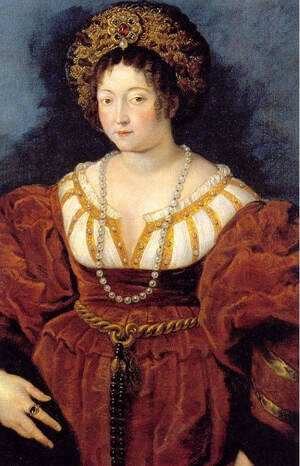 Portrait of Isabella d’Este, Wikimedia Commons
Portrait of Isabella d’Este, Wikimedia Commons
Isabella d’Este
Isabella d’Este, the Marchioness of Mantua and Lucrezia Borgia’s sister-in-law, devoted herself to the arts, fashion, and education. Her extensive correspondence with family, artists, leaders, and religious figures leaves a comprehensive record of her far-reaching interests. D’Este supported a wide range of artists, including painters Leonardo da Vinci and Raphael and sculptors such as Michelangelo. Poets, musicians, even architects graced her court at Mantua. By the end of her life, she had founded a school for girls and turned her home into a museum.
Anna Bijns
Not everyone appreciated the role played by patrons of the arts. Dutch poet Anna Bijns lamented how creative work had been diminished by its trendiness in her poem, “’Tis a Waste to Cast Before Swine.” She considered the ability to craft words to be a gift from the Holy Spirit and lamented the fact that so many poets were willing to work on commission for ignorant patrons.
“When Rhetoric I see on sale for money,
Like snow for sun my joy melts away,
And thus I repeat my initial remark:
‘Tis a waste to cast pearls before swine.”
[1528]
Bijns, sometimes referred to as “the Germanic Sappho,” never hesitated to speak her mind. She wrote another controversial poem, “Unyoked is Best! Happy the Woman Without a Man.” In it, she warned maidens not to rush into marriage and to consider all their options before they commit to a husband.
Louise Labé
Other women writers of the day promoted education for girls, even as they faced challenges. The French poet and adventurer Louise Labé went to war dressed as a man before settling down to write sonnets. Llate in her life, she regretted that she had not devoted more time to studying music, philosophy, and history. She wrote to a friend in 1555, “Study differs from other recreations, of which all one can say after enjoying them that one has passed the time. But study gives a more enduring sense of satisfaction. . . for the past delights and serves us more than the present.”
Isabella d’Este, the Marchioness of Mantua and Lucrezia Borgia’s sister-in-law, devoted herself to the arts, fashion, and education. Her extensive correspondence with family, artists, leaders, and religious figures leaves a comprehensive record of her far-reaching interests. D’Este supported a wide range of artists, including painters Leonardo da Vinci and Raphael and sculptors such as Michelangelo. Poets, musicians, even architects graced her court at Mantua. By the end of her life, she had founded a school for girls and turned her home into a museum.
Anna Bijns
Not everyone appreciated the role played by patrons of the arts. Dutch poet Anna Bijns lamented how creative work had been diminished by its trendiness in her poem, “’Tis a Waste to Cast Before Swine.” She considered the ability to craft words to be a gift from the Holy Spirit and lamented the fact that so many poets were willing to work on commission for ignorant patrons.
“When Rhetoric I see on sale for money,
Like snow for sun my joy melts away,
And thus I repeat my initial remark:
‘Tis a waste to cast pearls before swine.”
[1528]
Bijns, sometimes referred to as “the Germanic Sappho,” never hesitated to speak her mind. She wrote another controversial poem, “Unyoked is Best! Happy the Woman Without a Man.” In it, she warned maidens not to rush into marriage and to consider all their options before they commit to a husband.
Louise Labé
Other women writers of the day promoted education for girls, even as they faced challenges. The French poet and adventurer Louise Labé went to war dressed as a man before settling down to write sonnets. Llate in her life, she regretted that she had not devoted more time to studying music, philosophy, and history. She wrote to a friend in 1555, “Study differs from other recreations, of which all one can say after enjoying them that one has passed the time. But study gives a more enduring sense of satisfaction. . . for the past delights and serves us more than the present.”
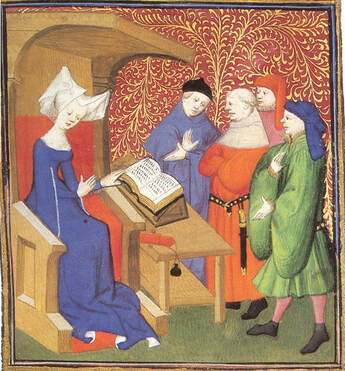 Portrait of Christine de Pizan, Wikimedia Commons
Portrait of Christine de Pizan, Wikimedia Commons
Christine de Pizan
Many of the women writers of the Renaissance expressed hopeful ambitions for women at the time. The way was paved by Christine de Pizan, who is sometimes considered the first feminist. De Pizan was born in Venice in 1364 but grew up in the French court where her father was the king’s astrologer. Although not noble herself, her participation in the French court gave her contacts and support. She was married and then widowed quite young and was able to write for a living while her children grew up. She depended on patrons and tended to write whatever they hired her to write, from love ballads to military strategy handbooks. Once her career was established, Christine de Pizan wrote works designed to elevate women in society. One work, The Book of the City of Ladies, recounted the histories of intellectual women or great leaders and heroes who were women. She wrote this to offset the hateful images of women that were common in the literature of the day. A second book, The Treasure of the City of Ladies’, was written as an advice manual for a French princess. Along with advice for princesses and nobles, Christine de Pizan included sections on advice for women of each rank and role in society. She made it clear that all women were essential and that the expectations of a baroness or an artisan’s wife were just as important as those of a leader. She wrote, “No matter which way I looked at it, I could find no evidence from my own experience to bear out such a negative view of the female nature and habits. Even so… I could scarcely find a moral work by any man you please author which didn't vote some chapter of paragraph two attacking the female sex."
In the visual arts, women made an impact, even though they were usually not permitted to enroll in arts academies. Women artists tended to be the daughters of artists who learned the techniques at home. They were also limited in their subject matter in many cases because it was not appropriate for a woman to work with nude models. Thus, the greatest women artists of the Renaissance got their start doing portraits—portraying their subjects at home was a fitting, domestic theme for a respectable woman.
Many of the women writers of the Renaissance expressed hopeful ambitions for women at the time. The way was paved by Christine de Pizan, who is sometimes considered the first feminist. De Pizan was born in Venice in 1364 but grew up in the French court where her father was the king’s astrologer. Although not noble herself, her participation in the French court gave her contacts and support. She was married and then widowed quite young and was able to write for a living while her children grew up. She depended on patrons and tended to write whatever they hired her to write, from love ballads to military strategy handbooks. Once her career was established, Christine de Pizan wrote works designed to elevate women in society. One work, The Book of the City of Ladies, recounted the histories of intellectual women or great leaders and heroes who were women. She wrote this to offset the hateful images of women that were common in the literature of the day. A second book, The Treasure of the City of Ladies’, was written as an advice manual for a French princess. Along with advice for princesses and nobles, Christine de Pizan included sections on advice for women of each rank and role in society. She made it clear that all women were essential and that the expectations of a baroness or an artisan’s wife were just as important as those of a leader. She wrote, “No matter which way I looked at it, I could find no evidence from my own experience to bear out such a negative view of the female nature and habits. Even so… I could scarcely find a moral work by any man you please author which didn't vote some chapter of paragraph two attacking the female sex."
In the visual arts, women made an impact, even though they were usually not permitted to enroll in arts academies. Women artists tended to be the daughters of artists who learned the techniques at home. They were also limited in their subject matter in many cases because it was not appropriate for a woman to work with nude models. Thus, the greatest women artists of the Renaissance got their start doing portraits—portraying their subjects at home was a fitting, domestic theme for a respectable woman.
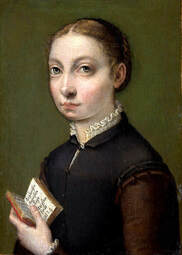 Portrait of Sofonisba Anguissola, flickr
Portrait of Sofonisba Anguissola, flickr
Levina Teerling
Levina Teerling (1510-1575) was an artist in Bruges. Like her father, she specialized in miniatures of exquisite detail. After her marriage, Teerling traveled to England, where she attracted the attention of the royal family. Teerling became a court artist under Henry VIII and stayed in that position through the reign of Elizabeth I. Very little of her work survives today. Accounts written during her career, however, were especially enthusiastic about a miniature of the Holy Trinity she had presented to Queen Mary and a portrait and a decorated box she made for Elizabeth.
Sofonisba Anguissola
Sofonisba Anguissola (1532-1625) was not the daughter of an artist but of an Italian nobleman of modest rank. He was impressed with the literature of the day that promoted education for girls, and he made sure his daughters had every opportunity open to them. Sofonisba was the oldest and her talent was obvious, even when she was a teenager. A visitor to their home saw her portrait of her sisters playing chess, one of her most famous paintings, and wrote that the girls looked almost alive on the canvas. After her marriage, Anguissola moved to Spain and continued painting portraits. Word of her skill King Phillip II, and he invited her to join his court. Once there, she expanded her portraits to adopt a formal style appropriate to the high status of her subjects. Sofonisba Anguissola had such a grand reputation across Europe that other women were inspired to emulate her.
Levina Teerling (1510-1575) was an artist in Bruges. Like her father, she specialized in miniatures of exquisite detail. After her marriage, Teerling traveled to England, where she attracted the attention of the royal family. Teerling became a court artist under Henry VIII and stayed in that position through the reign of Elizabeth I. Very little of her work survives today. Accounts written during her career, however, were especially enthusiastic about a miniature of the Holy Trinity she had presented to Queen Mary and a portrait and a decorated box she made for Elizabeth.
Sofonisba Anguissola
Sofonisba Anguissola (1532-1625) was not the daughter of an artist but of an Italian nobleman of modest rank. He was impressed with the literature of the day that promoted education for girls, and he made sure his daughters had every opportunity open to them. Sofonisba was the oldest and her talent was obvious, even when she was a teenager. A visitor to their home saw her portrait of her sisters playing chess, one of her most famous paintings, and wrote that the girls looked almost alive on the canvas. After her marriage, Anguissola moved to Spain and continued painting portraits. Word of her skill King Phillip II, and he invited her to join his court. Once there, she expanded her portraits to adopt a formal style appropriate to the high status of her subjects. Sofonisba Anguissola had such a grand reputation across Europe that other women were inspired to emulate her.
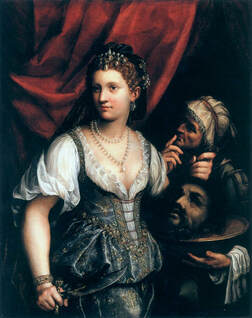 Painting of Judith decapitating Holofernes by Galizia,
Wikimedia Commons
Painting of Judith decapitating Holofernes by Galizia,
Wikimedia Commons
Lavina Fontana
Lavinia Fontana (1552-1614) was the daughter of a painter. She sought to emulate the work of Sofonisba Anguissola, but she also benefited from the unique opportunities available in Bologna, where women were permitted to attend university in certain subjects. Fontana earned a doctorate at the university. She was also unique in that she managed to launch a career outside a court or a convent. Fontana worked privately for commissions, just like the male artists of the day. Fontana did portraits but also took on large projects with mythical or religious themes. She was very popular, and the noble women of Bologna competed for her attention. Many patrons of high status employed her, including one who would go on to become Pope. Lavinia Fontana was so successful that her commissions served as her dowry in marriage. Her husband worked as her agent and assistant. With the expansion of opportunities and the growing success of female artists, the next generation took the next big steps towards Renaissance greatness.
Fede Galizia
Fede Galizia (1577-1630) was the daughter of a painter, but he did not intend to train her until he learned of Sofonisba Anguissola’s career. Galizia is best known for her still lifes, and she was considered a pioneer for her delicate touch in that art form. She also painted portraits and religious works. Like Fontana, worked on commission. Galizia was even hired to create altar pieces for a church in Milan. One of the most interesting things about Galizia is that she was first in a series of women artists to focus on the portrayal of heroic women in the Bible. Judith decapitating Holofernes was a favorite theme, and Galizia, like the women who emulated her, depicted subjects like Judith as strong and dignified, with none of the suggested sexualization that male artists tended to use.
Lavinia Fontana (1552-1614) was the daughter of a painter. She sought to emulate the work of Sofonisba Anguissola, but she also benefited from the unique opportunities available in Bologna, where women were permitted to attend university in certain subjects. Fontana earned a doctorate at the university. She was also unique in that she managed to launch a career outside a court or a convent. Fontana worked privately for commissions, just like the male artists of the day. Fontana did portraits but also took on large projects with mythical or religious themes. She was very popular, and the noble women of Bologna competed for her attention. Many patrons of high status employed her, including one who would go on to become Pope. Lavinia Fontana was so successful that her commissions served as her dowry in marriage. Her husband worked as her agent and assistant. With the expansion of opportunities and the growing success of female artists, the next generation took the next big steps towards Renaissance greatness.
Fede Galizia
Fede Galizia (1577-1630) was the daughter of a painter, but he did not intend to train her until he learned of Sofonisba Anguissola’s career. Galizia is best known for her still lifes, and she was considered a pioneer for her delicate touch in that art form. She also painted portraits and religious works. Like Fontana, worked on commission. Galizia was even hired to create altar pieces for a church in Milan. One of the most interesting things about Galizia is that she was first in a series of women artists to focus on the portrayal of heroic women in the Bible. Judith decapitating Holofernes was a favorite theme, and Galizia, like the women who emulated her, depicted subjects like Judith as strong and dignified, with none of the suggested sexualization that male artists tended to use.
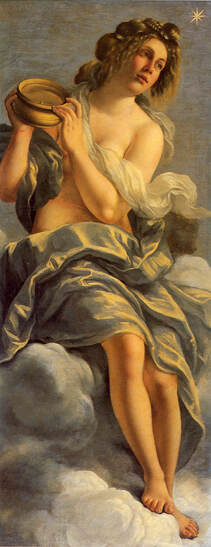 “The Allegory of Inclination”, Wikimedia commons
“The Allegory of Inclination”, Wikimedia commons
Artemisia Gentileschi
Artemisia Gentileschi (1593-1652) was one of most famous artists of her age. She was painting professionally in Venice by the time she was 15. She was raised by her father, who was also a painter. Gentileschi became a member of the Academy of Arts and Drawing in Florence. She worked on commissions and briefly served as a court painter, especially for the Medici family. Some of the greatest houses in Italy, such as the family of Michaelangelo, hired her to create a ceiling panel. Gentileschi also corresponded with great thinkers across Italy, including Galileo Galilei, who may have been the inspiration for the work she did on that ceiling. It features a nude holding a compass, and is entitled “The Allegory of Inclination.” Artemisia, created a series of paintings of the biblical Judith, as well as other strong women such as Esther, Mary Magdalene, Cleopatra, and Saint Cecilia.
Elisabeth Sirani
Elisabetta Sirani (1638-1665) had an amazing career in Bologna, but her life was cut short by a mysterious illness when she was only 27. Her father was a painter and an art dealer who took over the school of his own master and trained Elisabetta himself at first. As Bologna offered opportunities for women, she was able to move on to other academies and eventually opened an art academy for girls. Sirani did not hesitate to tackle grand historical or religious subjects in her paintings. More than 200 works of hers survive, and she signed just about every piece. Sirani also painted a few versions of Judith and a variety of saints, but she might be best known for Timoclea killing Captain Alexander the Great. According to the ancient historian Plutarch, Timoclea was a noble woman in Thebes who was assaulted by one of Alexander’s officers. In revenge, she pretended to lead him to her hidden wealth at the bottom of a well. When he stooped to look in, Timoclea pushed him to his death. Though other artists did survive assaults at the hands of male artists, Sirani seems to have simply been making a statement about strong women.
Artemisia Gentileschi (1593-1652) was one of most famous artists of her age. She was painting professionally in Venice by the time she was 15. She was raised by her father, who was also a painter. Gentileschi became a member of the Academy of Arts and Drawing in Florence. She worked on commissions and briefly served as a court painter, especially for the Medici family. Some of the greatest houses in Italy, such as the family of Michaelangelo, hired her to create a ceiling panel. Gentileschi also corresponded with great thinkers across Italy, including Galileo Galilei, who may have been the inspiration for the work she did on that ceiling. It features a nude holding a compass, and is entitled “The Allegory of Inclination.” Artemisia, created a series of paintings of the biblical Judith, as well as other strong women such as Esther, Mary Magdalene, Cleopatra, and Saint Cecilia.
Elisabeth Sirani
Elisabetta Sirani (1638-1665) had an amazing career in Bologna, but her life was cut short by a mysterious illness when she was only 27. Her father was a painter and an art dealer who took over the school of his own master and trained Elisabetta himself at first. As Bologna offered opportunities for women, she was able to move on to other academies and eventually opened an art academy for girls. Sirani did not hesitate to tackle grand historical or religious subjects in her paintings. More than 200 works of hers survive, and she signed just about every piece. Sirani also painted a few versions of Judith and a variety of saints, but she might be best known for Timoclea killing Captain Alexander the Great. According to the ancient historian Plutarch, Timoclea was a noble woman in Thebes who was assaulted by one of Alexander’s officers. In revenge, she pretended to lead him to her hidden wealth at the bottom of a well. When he stooped to look in, Timoclea pushed him to his death. Though other artists did survive assaults at the hands of male artists, Sirani seems to have simply been making a statement about strong women.
|
Sirani was, by all accounts, a dazzling artist. Some observers said she painted with such speed and perfection it was almost like she was “laughing” instead of working. Male critics who refused to believe a young woman could have produced such amazing work challenged her to paint a prince’s portrait in front of an audience to prove it was her own skill. She did so. She had such a loyal following that, upon her sudden death, contributions poured in to cover an elaborate funeral. Musicians composed works for the event and poets outdid one another with their heartfelt eulogies. But the experience and rights of European women was still emerging. Elsewhere in the Muslim world, women’s rights and freedoms looked considerably different.
|
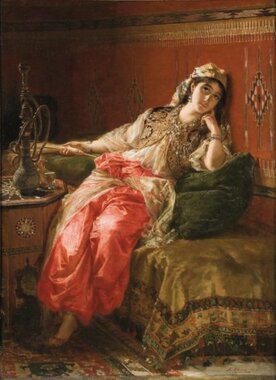 Harem woman, Wikimedia commons
Harem woman, Wikimedia commons
Ottomans
After the Mongols sacked Baghdad, destroying the riches of the Islamic Empire, the Muslim world was in disarray. Eventually, the Ottoman Empire emerged out of Turkey in the 1300s. There, the role and position of women shifted from the more public roles they had played in Turkish tribes to the more segregated lives they lived in a thriving empire. At this point, Islam was well-established.
The status of women in Islam had certainly declined. One Ottoman writer explained, “The responsible officials [have] the great desire to restrain the barbarous and irrepressible bestiality of women who...with that reprobate [morally damned] and diabolical nature, force their men, with their honeyed poison, to submit to them.”
When the Ottomans successfully conquered Constantinople in 1453, the empire was poised to control the Mediterranean economy. The Ottoman patriarchy set about doing what all major empires had done: telling women what they could and could not do. Women were socially removed from society, a custom called “cloistering.” This was a social convention more than any dictate in Islamic law.
One of the most enduring images of Ottoman women's segregation is the harem. The exotic and eroticized image of the harem is a Western obsession that overlooks the much more complex functioning of this important institution.
The harem represented a contrast between European and Ottoman societies. Ottoman harems were much different from Chinese harems, and both were eroticized in the Western imagination. In Ottoman society, the harem served to exclude women, but also to grant them freedom of expression. One contemporary observer wrote:
"the women dress themselves very richly in silk. They wear cloaks down to the ground, lined just like those of the men. They wear closed-up boots but fitting tighter on the ankle and more arched than those of the men...They are fond of black hair, and if any women by nature does not possess it, she accuses it by artificial means...They decorate their hair with small bands of ribbon and leave them spread over their shoulders and falling over their dress. Covering their hair they have a colored strip of thin silk...On the head they also have a small round cap, neat and close fitting, embroidered with satin, damask, or silk and colored.”
After the Mongols sacked Baghdad, destroying the riches of the Islamic Empire, the Muslim world was in disarray. Eventually, the Ottoman Empire emerged out of Turkey in the 1300s. There, the role and position of women shifted from the more public roles they had played in Turkish tribes to the more segregated lives they lived in a thriving empire. At this point, Islam was well-established.
The status of women in Islam had certainly declined. One Ottoman writer explained, “The responsible officials [have] the great desire to restrain the barbarous and irrepressible bestiality of women who...with that reprobate [morally damned] and diabolical nature, force their men, with their honeyed poison, to submit to them.”
When the Ottomans successfully conquered Constantinople in 1453, the empire was poised to control the Mediterranean economy. The Ottoman patriarchy set about doing what all major empires had done: telling women what they could and could not do. Women were socially removed from society, a custom called “cloistering.” This was a social convention more than any dictate in Islamic law.
One of the most enduring images of Ottoman women's segregation is the harem. The exotic and eroticized image of the harem is a Western obsession that overlooks the much more complex functioning of this important institution.
The harem represented a contrast between European and Ottoman societies. Ottoman harems were much different from Chinese harems, and both were eroticized in the Western imagination. In Ottoman society, the harem served to exclude women, but also to grant them freedom of expression. One contemporary observer wrote:
"the women dress themselves very richly in silk. They wear cloaks down to the ground, lined just like those of the men. They wear closed-up boots but fitting tighter on the ankle and more arched than those of the men...They are fond of black hair, and if any women by nature does not possess it, she accuses it by artificial means...They decorate their hair with small bands of ribbon and leave them spread over their shoulders and falling over their dress. Covering their hair they have a colored strip of thin silk...On the head they also have a small round cap, neat and close fitting, embroidered with satin, damask, or silk and colored.”
 Ottoman Women, Wikimedia Commons
Ottoman Women, Wikimedia Commons
Mothers and other relatives of sultans living cloistered lives became powerful and influential. Women of the harem used their wealth to support important projects and charities such as schools, hospitals, caravansaries, baths, fountains, soup kitchens, hostels, and mosques. Some estimate that about a quarter of Ottoman charitable foundations were started by
royal women! This shows that women who owned land in Ottoman society were able to manage their wealth reasonably easily.
Women of all social levels had the right to manage their property without patriarchal interference. They used the courts to defend their financial control, and it seems in most instances judges upheld these rights. Women were borrowers and lenders and had their own private businesses. During festivals, women were allowed to appear in public. But old concerns about women’s public morality created a backlash that forced them away again.
Lower class women lived different lives from their wealthy peers. They intermingled with men because they ran businesses, performed domestic errands, and did other work that necessitated such conduct. Women monopolized work in textile production, winding silk and spinning cotton. But women also sold food, were traders, operated public baths, brokered slave trades, and were entertainers. In the rural areas, women worked in agriculture and animal husbandry.
Ottoman law created a marriage system that favored men in numerous ways. Muslim men could marry non-Muslim women, but women could not marry outside the faith.. Men were permitted absolute authority over as many of four spouses, but women were not. Men could divorce with relative ease, but women could not. But outside of the law, marriages were a bit more egalitarian than meets the eye. Marriages were arranged, but women obtained prenuptial agreements and had the right to refuse a match. Even though the law allowed up to four wives, in the Ottoman empire, 95 percent of husbands had only one wife. Muslim women had, in reality, a much easier time getting divorced from neglectful and abusive husbands than their non-Muslim peers within the empire. So much so, that some women would convert to Islam in order to get divorced.
Ottoman women's status was probably equal to that of European women. Lady Elizabeth Craven traveled through Crimea to Constantinople, and observed, “I think I never saw a country where women may enjoy so much freedom from all reproach, as in Turkey…. The Turks in their conduct towards our sex are an example to all other nations.”
The Renaissance was a rebirth of art and culture, but it was in many ways a rebirth of the patriarchy. Women did not see widespread access to education or a major change in their status.
How many more women would we know about today if only they had had the chance to try? How would women find greater access to education and other means of self improvement? And what would bring about that shift?
royal women! This shows that women who owned land in Ottoman society were able to manage their wealth reasonably easily.
Women of all social levels had the right to manage their property without patriarchal interference. They used the courts to defend their financial control, and it seems in most instances judges upheld these rights. Women were borrowers and lenders and had their own private businesses. During festivals, women were allowed to appear in public. But old concerns about women’s public morality created a backlash that forced them away again.
Lower class women lived different lives from their wealthy peers. They intermingled with men because they ran businesses, performed domestic errands, and did other work that necessitated such conduct. Women monopolized work in textile production, winding silk and spinning cotton. But women also sold food, were traders, operated public baths, brokered slave trades, and were entertainers. In the rural areas, women worked in agriculture and animal husbandry.
Ottoman law created a marriage system that favored men in numerous ways. Muslim men could marry non-Muslim women, but women could not marry outside the faith.. Men were permitted absolute authority over as many of four spouses, but women were not. Men could divorce with relative ease, but women could not. But outside of the law, marriages were a bit more egalitarian than meets the eye. Marriages were arranged, but women obtained prenuptial agreements and had the right to refuse a match. Even though the law allowed up to four wives, in the Ottoman empire, 95 percent of husbands had only one wife. Muslim women had, in reality, a much easier time getting divorced from neglectful and abusive husbands than their non-Muslim peers within the empire. So much so, that some women would convert to Islam in order to get divorced.
Ottoman women's status was probably equal to that of European women. Lady Elizabeth Craven traveled through Crimea to Constantinople, and observed, “I think I never saw a country where women may enjoy so much freedom from all reproach, as in Turkey…. The Turks in their conduct towards our sex are an example to all other nations.”
The Renaissance was a rebirth of art and culture, but it was in many ways a rebirth of the patriarchy. Women did not see widespread access to education or a major change in their status.
How many more women would we know about today if only they had had the chance to try? How would women find greater access to education and other means of self improvement? And what would bring about that shift?
Draw your own conclusions
|
Learn how to teach with inquiry.
Many of these lesson plans were sponsored in part by the Library of Congress Teaching with Primary Sources Eastern Region Program, coordinated by Waynesburg University, the History and Social Studies Education Faculty at Plymouth State University, and the Patrons of the Remedial Herstory Project. |
|
OTHER: Renaissance and Ottomans
In this inquiry from Women in World History students examine primary sources from the lives of women in Renaissance Europe. Check it out! In this inquiry from Women in World History, read first person accounts and take the perspective of women to understand issues such as the harem, clothing, and use of slaves in the Ottoman world. Check it out! |
Lesson Plans from Other Organizations
- This website, Women in World History has primary source based lesson plans on women's history in a whole range of topics. Some are free while others have a cost.
- The Roy Rosenzweig Center for History and New Media has produced recommendations for teaching women's history with primary sources and provided a collection of sources for world history. Check them out!
- The Stanford History Education Group has a number of lesson plans about women in World History.
Unknown: Florentine Document
All women and girls, whether married or not, whether betrothed or not, of whatever age, rank, and condition...who wear - or wear in future - any gold, silver, pearls, precious stones, bells, ribbons of gold or silver, or cloth of silk brocade on their bodies or head for the ornamentation of the bodies...will be required to pay each year...the sum of 50 [coins] ...exceptions to this prohibition are that every married woman may wear on her hand or hands as many as two rings and every married woman or girl who is betrothed may wear a silver belt which does not exceed fourteen ounces in weight.
Florentine Brucker, Gene. The Society of Renaissance Florence Harper & Row: New York, 1971, 46-47.
Questions:
Florentine Brucker, Gene. The Society of Renaissance Florence Harper & Row: New York, 1971, 46-47.
Questions:
- Summarize this source?
- What is the difference for married women and single women?
Unknown: Regulation To Restrain Female Ornaments And Dress
After diligent examination and mature deliberation, the responsible officials [have] the great desire to restrain the barbarous and irrepressible bestiality of women who...with that reprobate [morally damned] and diabolical nature, force their men, with their honeyed poison, to submit to them. But it is not in accordance with nature for women to be burdened with so many expensive ornaments, and on account of these unbearable expenses, men are avoiding matrimony.
"Regulation to restrain female ornaments and dress, [1413]." Ibid.
Questions:
"Regulation to restrain female ornaments and dress, [1413]." Ibid.
Questions:
- Is this source from an Ottoman or Florentine?
Unkown: From The Deliberations Of The Officials Of The Curfew And The Convents
The trumpet of the lord and the voice of the highest shall call out on the day of judgment: "You who are worthy; come; and you who are unworthy, o'accursed ones, go into the eternal fire.”...Natural law has ordained that the human species should multiply and that man and woman be joined together by matrimony...nothing is more displeasing to God than its violation. There are many who have failed. As a result, divine providence is disturbed and has afflicted the world with evils of wars, disorders, epidemics and other calamities and troubles. A heavy penalty must be meted out to delinquents, especially those women who continue to sin.
Ottoman "from the deliberations of the officials of the curfew and the convents." Ibid.
Questions:
Ottoman "from the deliberations of the officials of the curfew and the convents." Ibid.
Questions:
- Is this source from an Ottoman or a Florentine?
Zara Da Bassano: The Harem
...the women dress themselves very richly in silk. They wear cloaks down to the ground, lined just like those of the men. They wear closed-up boots but fitting tighter on the ankle and more arched than those of the men...They are fond of black hair, and if any women by nature does not posses it, she accuses it by artificial means...They decorate their hair with small bands of ribbon and leave them spread over their shoulders and falling over their dress. Covering their hair they have a colored strip of thin silk...On the head they also have a small round cap, neat and close fitting, embroidered with satin, damask, or silk and colored.
Bassano da Zara, quoted in N. M. Penzer. The Harem: an account of the institution as it existed in the Palace of the Turkish sultans with a history of the grand Seraglio from its foundation to modern times. Spring Books: London, 1936, p. 163- 165.
Questions:
Bassano da Zara, quoted in N. M. Penzer. The Harem: an account of the institution as it existed in the Palace of the Turkish sultans with a history of the grand Seraglio from its foundation to modern times. Spring Books: London, 1936, p. 163- 165.
Questions:
- Summarize this source?
Francis Petrarch: Letters Of Old Age
[To her husband] she replied, “I have said and will repeat: I can not want anything except what you want, and in these children is nothing of mine but the birth pangs. You are my lord and theirs, use your right over your property, and do no seek my consent. From the moment I entered your house, as I laid aside my clothes, I laid aside my wishes and feelings, and put on yours; therefore, in anything, whatever you want, I too want.”
Francis Petrarch, Letters of Old Age [Rerum senilium Libri, I- VIII], Vol. II, translated by Aldo S. Bernardo, et al. Baltimore: John Hopkins University Press: Baltimore, 1992, p. 663.
Questions:
Francis Petrarch, Letters of Old Age [Rerum senilium Libri, I- VIII], Vol. II, translated by Aldo S. Bernardo, et al. Baltimore: John Hopkins University Press: Baltimore, 1992, p. 663.
Questions:
- Is this source from an Ottoman or a Florentine?
Madeline: Excerpt
Night and day immoral individuals openly consume intoxicating beverages to an excessive degree and commit all kinds of transgressions against women.
Imperial order 1585, Ankara, cited in Madeline c. Zilfi, Ed. Women in the Ottoman Empire: Middle Eastern. Women in the Early Modern Era. Leiden: Brill, 1997, p. 185.
Questions:
Imperial order 1585, Ankara, cited in Madeline c. Zilfi, Ed. Women in the Ottoman Empire: Middle Eastern. Women in the Early Modern Era. Leiden: Brill, 1997, p. 185.
Questions:
- Summarize this source.
Alessandro Strozzi: Quote
A husband who is promised a dowry by his brother-in-law that is not paid can send his wife back to her brother’s house and even deny her basic necessities.
Alessandro Strozzi, Florentine jurist, quoted in William J. Connell, Ed. Society and Individual in Renaissance Florence. University of California Press: Berkley, 2002, p. 99-100.
Questions:
Alessandro Strozzi, Florentine jurist, quoted in William J. Connell, Ed. Society and Individual in Renaissance Florence. University of California Press: Berkley, 2002, p. 99-100.
Questions:
- Is this source from an Ottoman or a Florentine?
Ebu Suud: Quote
Rights must not be allowed to languish. If she [a wife] does not come [to the court] in person, the legal authority must obtain a proxy for her by ordering that one be appointed.
Ebu Suud, 16th century, quoted in Lesley Pierne, Morality Tales: Law and Gender in the Ottoman Court of Aintab. University of California Press: Berkley, 2003, p. 153.
Questions:
Ebu Suud, 16th century, quoted in Lesley Pierne, Morality Tales: Law and Gender in the Ottoman Court of Aintab. University of California Press: Berkley, 2003, p. 153.
Questions:
- Summarize this source.
Giovanni Domenici: Quote
Now as a bride receiving the rich casket from that husband whom she never saw, she feels much beloved when she is so richly rewarded and she creates a noble image of him who so nobly sent, and not seeing, his love.
Giovanni Domenici, Florentine friar, quoted in Connell, op cit., p. 95.
Questions:
Giovanni Domenici, Florentine friar, quoted in Connell, op cit., p. 95.
Questions:
- What is this source describing?
lucienne Thys-Senocak: Excerpt
To achieve her desire of acquiring merit in God’s sight...and in genuine and sincere dedication devoid of all hypocrisy and deceit, only with the purest of intentions, she ordered [the construction of] a great many magnificent edifices of charity.
Lucienne Thys-Senocak, Ottoman Women Builders: The Architectural Patronage of Hadice Turban Sultan, Ashgate 2006, p. 85.
Questions:
Lucienne Thys-Senocak, Ottoman Women Builders: The Architectural Patronage of Hadice Turban Sultan, Ashgate 2006, p. 85.
Questions:
- Is this source Ottoman or Florentine?
Kosem Sultan: Inscription
She built a school...for which let God grant her fame and benevolence. Oh God, take her into the eternal Paradise.
Inscription, referring to Kosem Sultan. Ibid, p. 89
Questions:
Inscription, referring to Kosem Sultan. Ibid, p. 89
Questions:
- Summarize this source?
- Why might this be significant?
Antonio Roselli: Quote
In those matters no one can rule the wills of wives except their husbands to whom God wished females to be subordinate.
Antonio Roselli of Arezzo, University of Florence, quoted in Connell, op cit, p. 93.
Questions:
Antonio Roselli of Arezzo, University of Florence, quoted in Connell, op cit, p. 93.
Questions:
- How does this affect women?
Baldassare Castiglione: Excerpt
Women are imperfect creatures, and consequently have less dignity than men, and that they are not capable of the virtues that men are capable of... Very learned men have written that, since nature always intends and plans to make things most perfect, she would constantly bring forth men if she could; and that when a woman is born, it is a defect or mistake of nature, and contrary to what she would wish to do...Thus, a woman can be said to be a creature produced by chance and accident. Nevertheless, since these defects in women are the fault of nature that made them so, we ought not on that account to despise them, or fail to show them the respect which is their due. But to esteem them to be more than what they are seems a manifest error.
Castiglione, Baldassare. The Book of the Courtier, George Bull, translator. Penguin: Baltimore, 1967.
Questions:
Castiglione, Baldassare. The Book of the Courtier, George Bull, translator. Penguin: Baltimore, 1967.
Questions:
- Summarize this source.
Théodore Godefroy: Manuscript
The following is an extract from ‘Le Ceremonial Français... a manuscript for Théodore Godefroy. Godefroy was a 16th century French scholar. In the document, Charles IX highlights Catherine’s political status. Charles removed his hat as he approached his mother as a sign of respect that was usually only accorded to kings.
[T]he queen [mother] rose and went toward the king on his royal seat to declare that she
remitted into his majesty's hands the administration of his realm which had been given by the
estates assembled at Orleans. And as a sign of this, the said lady went toward the said lord and
he descended three or four steps from his throne to come before her with his hat in his hand.
And he made a great reverence to this woman and kissed her, and the king said to her that she
would govern and command more than ever.
Crawford. K (2000) ‘Catherine de Medicis and the Performance of Political Motherhood’ In The Sixteenth Century Journal, Vol. 31, No. 2. pp.643-673. Kirksville: Truman State University.
Questions:
[T]he queen [mother] rose and went toward the king on his royal seat to declare that she
remitted into his majesty's hands the administration of his realm which had been given by the
estates assembled at Orleans. And as a sign of this, the said lady went toward the said lord and
he descended three or four steps from his throne to come before her with his hat in his hand.
And he made a great reverence to this woman and kissed her, and the king said to her that she
would govern and command more than ever.
Crawford. K (2000) ‘Catherine de Medicis and the Performance of Political Motherhood’ In The Sixteenth Century Journal, Vol. 31, No. 2. pp.643-673. Kirksville: Truman State University.
Questions:
- What kind of source is this?
- When was it written?
- What does this document tell us about Catherine’s power in the court and her relationship with Charles IX?
Michel de L’Hospital: Oeuvres Completes
Michel de L’Hospital was a catholic lawyer who worked for the French government in the 16th century. Catherine de Medici named him chancellor in 1560 hoping he might reconcile the conflict between Catholics and Protestants. In this short extract he refers to the reign of her second son, Charles IX, and emphasizes Catherine’s special status and power.
He is in his majority, and I do not hesitate to say in the presence of his majesty ... that he
wants to be regarded as an adult in all things and everywhere, and in every place as having
strength, except towards the queen his mother, to whom he reserves the power to command.
Michel de L’Hospital, Oeuvres Completes, 16th century. Translation by Dufey. P. J. S (1824) Paris.
Questions:
He is in his majority, and I do not hesitate to say in the presence of his majesty ... that he
wants to be regarded as an adult in all things and everywhere, and in every place as having
strength, except towards the queen his mother, to whom he reserves the power to command.
Michel de L’Hospital, Oeuvres Completes, 16th century. Translation by Dufey. P. J. S (1824) Paris.
Questions:
- What kind of source is this?
- When was it written?
- Why might the young King reserve power for his mother?
Pierre de l’Estoile: Journal
The following extract is a verse transcribed in the 1575 journal of Pierre de l’Estoile. The verses refer to Catherine’s extreme passion for power. Note the violent language used.
You marvel how a woman, after annulling the Salic law, boldly presses Gallic necks to her authority. Alas! She unmans cocks, tearing off their crests and testicles; a virago holds sway over the French. An unbridled woman dines on [men], and as she devours this food, she smacks her lips and says, “Thus I castrate Gallic courage, thus I unman the French, thus I subdue them!”
Murphy. S (1992) ‘Catherine, Cybele and Ronsard’s Witnesses’ In Long. K (Ed) High Anxiety: Masculinity in Crisis in Early Modern France. Kirksville: Truman State University.
Questions:
You marvel how a woman, after annulling the Salic law, boldly presses Gallic necks to her authority. Alas! She unmans cocks, tearing off their crests and testicles; a virago holds sway over the French. An unbridled woman dines on [men], and as she devours this food, she smacks her lips and says, “Thus I castrate Gallic courage, thus I unman the French, thus I subdue them!”
Murphy. S (1992) ‘Catherine, Cybele and Ronsard’s Witnesses’ In Long. K (Ed) High Anxiety: Masculinity in Crisis in Early Modern France. Kirksville: Truman State University.
Questions:
- What kind of source is this?
- When was it written?
- How did this primary source interpret Catherine’s power?
Marguerite De Valois: Memoirs
Marguerite de Valois was the daughter of Catherine de Medici and the sister of the French King Charles IX. In this letter she describes the Massacre of St. Bartholomew, which took place during the celebrations of her wedding to King Henry of Navarre, the protestant. She states her knowledge of the events and any role her mother may have played in it.
King Charles, a prince of great prudence... went to the apartments of the Queen his mother, and sending for... all the Princes and Catholic officers, the "Massacre of St. Bartholomew" was that night resolved upon.
Immediately every hand was at work; chains were drawn across the streets, the alarm- bells were sounded, and every man repaired to his post, according to the orders he had received, whether it was to attack the Admiral's quarters, or those of the other Huguenots [Protestants].
I was perfectly ignorant of what was going forward. I observed everyone to be in motion: the Huguenots, driven to despair by the attack upon the Admiral's life, and the Guises, fearing they should not have justice done them, whispering all they met in the ear.
The Huguenots were suspicious of me because I was a Catholic, and the Catholics because I was married to the King of Navarre, who was a Huguenot. This being the case, no one spoke a syllable of the matter to me.
At night, when I went into the bedchamber of the Queen my mother, I placed myself on a coffer, next my sister Lorraine, who, I could not but remark, appeared greatly cast down. The Queen my mother was in conversation with some one, but, as soon as she espied me, she bade me go to bed. As I was taking leave, my sister seized me by the hand and stopped me, at the same time shedding a flood of tears: "For the love of God," cried she, "do not stir out of this chamber!" I was greatly alarmed at this exclamation; perceiving which, the Queen my mother called my sister to her, and chid her very severely. My sister replied it was sending me away to be sacrificed; for, if any discovery should be made, I should be the first victim of their revenge. The Queen my mother made answer that, if it pleased God, I should receive no hurt, but it was necessary I should go, to prevent the suspicion that might arise from my staying.
I perceived there was something on foot which I was not to know, but what it was I could not make out from anything they said...
As soon as I beheld it was broad day, I apprehended all the danger my sister had spoken of was over; and being inclined to sleep, I bade my nurse make the door fast, and I applied myself to take some repose. In about an hour I was awakened by a violent noise at the door, made with both hands and feet, and a voice calling out, "Navarre! Navarre!" My nurse, supposing the King my husband to be at the door, hastened to open it, when a gentleman... threw himself immediately upon my bed... pursued by four archers, who followed him into the bedchamber... In this situation I screamed aloud... [The] captain of the guard, came into the bedchamber, and, seeing me thus surrounded... reprimanded the archers very severely for their indiscretion, and drove them out of the chamber. [He assured] me that the King my husband was safe...
Five or six days afterwards, those who were engaged in this plot, considering that it was incomplete whilst the King my husband... remained alive... and knowing that no attempt could be made on my husband whilst I continued to be his wife, devised a scheme which they suggested to the Queen my mother for divorcing me from him.
Valois, Marguerite De. “Letter V.” The Memoirs Of Marguerite De Valois. Project Guttenberg. N.D. Retrieved from https://www.gutenberg.org/files/12967/12967-h/12967-h.htm.
Questions:
King Charles, a prince of great prudence... went to the apartments of the Queen his mother, and sending for... all the Princes and Catholic officers, the "Massacre of St. Bartholomew" was that night resolved upon.
Immediately every hand was at work; chains were drawn across the streets, the alarm- bells were sounded, and every man repaired to his post, according to the orders he had received, whether it was to attack the Admiral's quarters, or those of the other Huguenots [Protestants].
I was perfectly ignorant of what was going forward. I observed everyone to be in motion: the Huguenots, driven to despair by the attack upon the Admiral's life, and the Guises, fearing they should not have justice done them, whispering all they met in the ear.
The Huguenots were suspicious of me because I was a Catholic, and the Catholics because I was married to the King of Navarre, who was a Huguenot. This being the case, no one spoke a syllable of the matter to me.
At night, when I went into the bedchamber of the Queen my mother, I placed myself on a coffer, next my sister Lorraine, who, I could not but remark, appeared greatly cast down. The Queen my mother was in conversation with some one, but, as soon as she espied me, she bade me go to bed. As I was taking leave, my sister seized me by the hand and stopped me, at the same time shedding a flood of tears: "For the love of God," cried she, "do not stir out of this chamber!" I was greatly alarmed at this exclamation; perceiving which, the Queen my mother called my sister to her, and chid her very severely. My sister replied it was sending me away to be sacrificed; for, if any discovery should be made, I should be the first victim of their revenge. The Queen my mother made answer that, if it pleased God, I should receive no hurt, but it was necessary I should go, to prevent the suspicion that might arise from my staying.
I perceived there was something on foot which I was not to know, but what it was I could not make out from anything they said...
As soon as I beheld it was broad day, I apprehended all the danger my sister had spoken of was over; and being inclined to sleep, I bade my nurse make the door fast, and I applied myself to take some repose. In about an hour I was awakened by a violent noise at the door, made with both hands and feet, and a voice calling out, "Navarre! Navarre!" My nurse, supposing the King my husband to be at the door, hastened to open it, when a gentleman... threw himself immediately upon my bed... pursued by four archers, who followed him into the bedchamber... In this situation I screamed aloud... [The] captain of the guard, came into the bedchamber, and, seeing me thus surrounded... reprimanded the archers very severely for their indiscretion, and drove them out of the chamber. [He assured] me that the King my husband was safe...
Five or six days afterwards, those who were engaged in this plot, considering that it was incomplete whilst the King my husband... remained alive... and knowing that no attempt could be made on my husband whilst I continued to be his wife, devised a scheme which they suggested to the Queen my mother for divorcing me from him.
Valois, Marguerite De. “Letter V.” The Memoirs Of Marguerite De Valois. Project Guttenberg. N.D. Retrieved from https://www.gutenberg.org/files/12967/12967-h/12967-h.htm.
Questions:
- What kind of source is this?
- When was it written?
- Does Marguerite blame her mother for the massacre? Explain.
Master Fitzherbert: Book of Husbandry, "What Works a Wife Should Do in General"
This selection comes from a reprint of the 1534 edition of The Book of Husbandry, written by one “Master
Fitzherbert.” The book (likely) first appeared in the 1520’s, and the identity of the author is debated. In this
text, “husbandry” refers to farming and other agricultural activities at this time, but the book also
considers religion and social etiquette. The extract below considers some of the roles women played in the
life of a Tudor farm, as well as demonstrates the male author’s opinion on what a woman should be doing.
Please note that the English language here has been modernized.
It is convenient for a husband to have sheep of his own, for many causes, and then may his wife
have part of the wool, to make her husband and her-selfe some clothes. And at the least way, she may
have the locks of the sheep, either to make clothes or blankets or coverlets, or both. And if she have not
wool of her own, she may take wool to spin of clothmakers, and by that means she may have a convenient
living, and many times to do other works. It is a wife’s occupation, to winnow all manner of corn, to make
malt, to wash and wringe, to make hay, shear corn, and in time of need to help her husband to fill the
muck wagon or dung cart, drive the plough, to load hay, corn, and such other. And to go or ride to the
market, to sell butter, cheese, milk, eggs, chickens, capons [a type of poultry], hens, pigs, geese, and all
manner of corn. And also to buy all manner of necessary things belonging to household...
The Project Gutenberg EBook of The Book of Husbandry by Master Fitzherbert (1534)
Questions:
Fitzherbert.” The book (likely) first appeared in the 1520’s, and the identity of the author is debated. In this
text, “husbandry” refers to farming and other agricultural activities at this time, but the book also
considers religion and social etiquette. The extract below considers some of the roles women played in the
life of a Tudor farm, as well as demonstrates the male author’s opinion on what a woman should be doing.
Please note that the English language here has been modernized.
It is convenient for a husband to have sheep of his own, for many causes, and then may his wife
have part of the wool, to make her husband and her-selfe some clothes. And at the least way, she may
have the locks of the sheep, either to make clothes or blankets or coverlets, or both. And if she have not
wool of her own, she may take wool to spin of clothmakers, and by that means she may have a convenient
living, and many times to do other works. It is a wife’s occupation, to winnow all manner of corn, to make
malt, to wash and wringe, to make hay, shear corn, and in time of need to help her husband to fill the
muck wagon or dung cart, drive the plough, to load hay, corn, and such other. And to go or ride to the
market, to sell butter, cheese, milk, eggs, chickens, capons [a type of poultry], hens, pigs, geese, and all
manner of corn. And also to buy all manner of necessary things belonging to household...
The Project Gutenberg EBook of The Book of Husbandry by Master Fitzherbert (1534)
Questions:
- Describe a woman's role in society?
- Does this seem like a fair amount of work?
Christine De Pizan: The City Of Ladies
Christine de Pizan was an Italian writer and poet during the Medieval Ages. Her most notable works
include “The City of Ladies” and “Three Virtues,” in which she describes and defends the role of women in
society.
One day I was surrounded by books of all kinds... my mind dwelt at length on the
opinions of various authors whom I had studied... It made me wonder how it happened that so
many different men - and learned men among them - have been and are so inclined to express...
so many wicked insults about women and their behavior... it seems that they all speak from one
and the same mouth... Thinking deeply about these matters, I began to examine my character
and conduct as a woman and, similarly, I considered other women whose company I frequently
kept, princesses, great ladies, women of the middle and lower classes, who had told me of their
most private and intimate thoughts... No matter how long I studied the problem, I could not see
or realize how their (male writers) claims could be true when compared to the natural behavior
and character of women.
I know a woman today, named Anastasia who is so learned and skilled in painting
manuscript borders and miniature backgrounds that one cannot find an artisan in all the city of
Paris... who can surpass her... People cannot stop talking about her. And I know this from
experience, for she has executed several things for me which stand out among the paintings of
the great masters.
I am amazed by the opinion of some men who claim that they do not want their
daughters or wives to be educated because they would be ruined as a result... Not all men (and
especially the wisest) share the opinion that it is bad for women to be educated. But it is very
true that many foolish men have claimed this because it upset them that women knew more than
they did.
“The Book of the City of Ladies.” Christine de Pisan. 1405.
Questions:
include “The City of Ladies” and “Three Virtues,” in which she describes and defends the role of women in
society.
One day I was surrounded by books of all kinds... my mind dwelt at length on the
opinions of various authors whom I had studied... It made me wonder how it happened that so
many different men - and learned men among them - have been and are so inclined to express...
so many wicked insults about women and their behavior... it seems that they all speak from one
and the same mouth... Thinking deeply about these matters, I began to examine my character
and conduct as a woman and, similarly, I considered other women whose company I frequently
kept, princesses, great ladies, women of the middle and lower classes, who had told me of their
most private and intimate thoughts... No matter how long I studied the problem, I could not see
or realize how their (male writers) claims could be true when compared to the natural behavior
and character of women.
I know a woman today, named Anastasia who is so learned and skilled in painting
manuscript borders and miniature backgrounds that one cannot find an artisan in all the city of
Paris... who can surpass her... People cannot stop talking about her. And I know this from
experience, for she has executed several things for me which stand out among the paintings of
the great masters.
I am amazed by the opinion of some men who claim that they do not want their
daughters or wives to be educated because they would be ruined as a result... Not all men (and
especially the wisest) share the opinion that it is bad for women to be educated. But it is very
true that many foolish men have claimed this because it upset them that women knew more than
they did.
“The Book of the City of Ladies.” Christine de Pisan. 1405.
Questions:
- Why did Christine believe women weren’t educated in 1405 in Italy?
- What talents has she witnessed in other women?
- What role did women play in business at this time?
Christine de Pizan: Three Virtues
Christine de Pizan was an Italian writer and poet during the Medieval Ages. Her most notable works
include “The City of Ladies” and “Three Virtues,” in which she describes and defends the role of women in
society.
She (the lady of the manor) should be a good manager, knowledgeable about farming, knowing
in what weather and in what season the fields should be worked... She should often take her
recreation in the fields in order to see how the work is progressing, for there are many who
would willingly stop raking the ground beyond the surface if they thought nobody would
notice.
“Three Virtues.” Christine de Pisan. 1406.
Questions:
include “The City of Ladies” and “Three Virtues,” in which she describes and defends the role of women in
society.
She (the lady of the manor) should be a good manager, knowledgeable about farming, knowing
in what weather and in what season the fields should be worked... She should often take her
recreation in the fields in order to see how the work is progressing, for there are many who
would willingly stop raking the ground beyond the surface if they thought nobody would
notice.
“Three Virtues.” Christine de Pisan. 1406.
Questions:
- Why did Christine believe women weren’t educated in 1405 in Italy?
- What talents has she witnessed in other women?
- What role did women play in business at this time?
Queen Mary I: Act Concerning the Regal Power
An act declared by Queen Mary I of England, which made it legal for women to have sole ruling power as
the Queen. Mary began her rule in 1553 after the death of her brother, Edward VI, left no male heir to the
English throne. Female rule was considered with suspicion, and Mary’s marriage also caused concern.
Shortly after her accession, she married Prince Philip of Spain (later Philip II). Women were considered
submissive to their husbands; did that mean the Queen would be submissive to her husband in politics,
too? The English government and people became concerned that Philip would seize power, and therefore
Mary was moved to declare her intention to retain the English throne for herself. In this, Mary declares
her right to rule as a woman, and her unwillingness to relinquish her crown to a man, even her husband.
[B]e it declared and enacted by the authority of this present parliament that the law of
this realm is and ever hath been, and ought to be understood, that the kingly or regal office of
the realm, and all dignities [etc.] ... thereunto annexed, united, or belonging, being invested
either in male or female, are and be and ought to be as fully, wholly, absolutely, and entirely
deemed, judged, accepted, invested, and taken in the one as in the other; so that what or
whensoever statute or law doth limit and appoint that the king of this realm may or shall have,
execute, and do anything as king, or doth give any profit or commodity to the king, or doth limit
or appoint any pains or punishment for the correction of offenders or transgressors against the
regality and dignity of the king or of the crown, the same the queen ... may by the same authority
and power likewise have, exercise, execute, punish, correct, and do, to all intents, constructions,
and purposes, without doubt, ambiguity, scruple, or question — any custom, use, or scruple, or
any other thing whatsoever to be made to the contrary notwithstanding.
Queen Mary I, Act Concerning the Regal Power (1554) § (n.d.). https://constitution.org/1-
History/sech/sech_078.htm.
Questions:
the Queen. Mary began her rule in 1553 after the death of her brother, Edward VI, left no male heir to the
English throne. Female rule was considered with suspicion, and Mary’s marriage also caused concern.
Shortly after her accession, she married Prince Philip of Spain (later Philip II). Women were considered
submissive to their husbands; did that mean the Queen would be submissive to her husband in politics,
too? The English government and people became concerned that Philip would seize power, and therefore
Mary was moved to declare her intention to retain the English throne for herself. In this, Mary declares
her right to rule as a woman, and her unwillingness to relinquish her crown to a man, even her husband.
[B]e it declared and enacted by the authority of this present parliament that the law of
this realm is and ever hath been, and ought to be understood, that the kingly or regal office of
the realm, and all dignities [etc.] ... thereunto annexed, united, or belonging, being invested
either in male or female, are and be and ought to be as fully, wholly, absolutely, and entirely
deemed, judged, accepted, invested, and taken in the one as in the other; so that what or
whensoever statute or law doth limit and appoint that the king of this realm may or shall have,
execute, and do anything as king, or doth give any profit or commodity to the king, or doth limit
or appoint any pains or punishment for the correction of offenders or transgressors against the
regality and dignity of the king or of the crown, the same the queen ... may by the same authority
and power likewise have, exercise, execute, punish, correct, and do, to all intents, constructions,
and purposes, without doubt, ambiguity, scruple, or question — any custom, use, or scruple, or
any other thing whatsoever to be made to the contrary notwithstanding.
Queen Mary I, Act Concerning the Regal Power (1554) § (n.d.). https://constitution.org/1-
History/sech/sech_078.htm.
Questions:
- What power did this act give Queen Mary I?
- How did this act work against ideas of the time regarding a woman’s role in marriage?
Maria Theresa: General School Regulations
This order by Maria Theresa, Empress of the Holy Roman Empire, l aimed to reform education within
Austria and her territories. Under these regulations, children of both sexes were required to attend school
between the ages of six and twelve. Although women could be educated before this, requiring girls to go to
school was radical at the time.
We have realized that the education of young people , both sexes, as the most important
basis of the true happiness of the nations, however, demands a more precise level.
This subject attracted our attention all the more, the more certain of a good upbringing,
and leadership in the early years, the whole future way of life of all people, and the education of
genius, and the way of thinking of entire peoples depends, which can never be achieved if the
darkness of ignorance is not cleared up by well-chosen educational and teaching institutions,
and everyone who is given instruction appropriate to his or her status
In order to achieve this necessary, as a mutually beneficial decision, we have found the
current general lane of the Sculoronung to be fixed for all of our German hereditary kingdoms
and countries.
The right to hold schools and to instruct the youth also remains with all those of clerical
and secular status, male and female, who have hitherto been in the same regard; But the schools
have to go arranged altogether in the general established manner, as soon as possible, and in all
matters, without any exception, to depend on the school commission of the province in which
they are located.
Wherever there is opportunity to have their own schools for the maids, they attend them
and, if it is possible, are to be instructed in sewing, knitting and other things appropriate to their
sex; But where there are no separate girls' schools, they have to go to the common school, but not
among the boys, but on their own benches, separated from them, and are instructed with the
boys in the same class, with who at the same time learn everything that is appropriate for their
sex.
Theresa, Maria, General School Regulations for the German Normal, Secondary and Trivial Schools in all
Kaiserl § (n.d.).
Questions:
Austria and her territories. Under these regulations, children of both sexes were required to attend school
between the ages of six and twelve. Although women could be educated before this, requiring girls to go to
school was radical at the time.
We have realized that the education of young people , both sexes, as the most important
basis of the true happiness of the nations, however, demands a more precise level.
This subject attracted our attention all the more, the more certain of a good upbringing,
and leadership in the early years, the whole future way of life of all people, and the education of
genius, and the way of thinking of entire peoples depends, which can never be achieved if the
darkness of ignorance is not cleared up by well-chosen educational and teaching institutions,
and everyone who is given instruction appropriate to his or her status
In order to achieve this necessary, as a mutually beneficial decision, we have found the
current general lane of the Sculoronung to be fixed for all of our German hereditary kingdoms
and countries.
The right to hold schools and to instruct the youth also remains with all those of clerical
and secular status, male and female, who have hitherto been in the same regard; But the schools
have to go arranged altogether in the general established manner, as soon as possible, and in all
matters, without any exception, to depend on the school commission of the province in which
they are located.
Wherever there is opportunity to have their own schools for the maids, they attend them
and, if it is possible, are to be instructed in sewing, knitting and other things appropriate to their
sex; But where there are no separate girls' schools, they have to go to the common school, but not
among the boys, but on their own benches, separated from them, and are instructed with the
boys in the same class, with who at the same time learn everything that is appropriate for their
sex.
Theresa, Maria, General School Regulations for the German Normal, Secondary and Trivial Schools in all
Kaiserl § (n.d.).
Questions:
- What is the goal of the regulations?
- How does this affect women/girls?
- Is there a difference for how boys are to be taught in comparison to girls?
- According to this regulation, what are the long term effects of compulsory [required] education?
Queen Victoria: Excerpts From Letters
Queen Victoria of Great Britain and Ireland (1837-1901) wrote the following two extracts which give her
opinion on women’s “natural” interest and roles. Her husband, Prince Albert, acted as an unofficial co-
ruler during his short life, dying in 1861. Victoria went on to rule for forty years after her husband’s
death, but maintained her staunch beliefs that men were more natural rulers. At times, she expressed
frustration with gender roles, while at others (as viewed in the excerpts below) she accepted and embraced
her lesser position as a fact.
Excerpt #1
“Albert grows daily fonder and fonder of politics and business, and is so wonderfully fit
for both - such perspicacity and such courage - and I grow daily to dislike them more and more.
We women are not made for governing; and, if we were good women, we must dislike those
masculine occupations; but there are times which force one to take interest in them... and I do of
course, intensely.” (1852)
Excerpt #2
“The Queen is most anxious to enlist everyone who can speak or write to join in checking
this mad wicked folly of ‘women's rights’, with all its attendant hours, on which her poor sex is
bent, forgetting every sense of womanly feeling and propriety... God created men and women
different-then let them remain each in their own position.... Woman would become the most
hateful, heatless, and disgusting of human beings were she allowed to unsex herself; and where
would be the protection which man was intended to give the weaker sex?” (1870)
Chernock, Arianne. “Conclusion: Queen Victoria versus the Suffragettes: The Politics of Queenship in
Edwardian Britain.” Chapter. In The Right to Rule and the Rights of Women: Queen Victoria and
the Women's Movement, 193–216. Cambridge: Cambridge University Press, 2019.
doi:10.1017/9781108652384.007.
Questions:
opinion on women’s “natural” interest and roles. Her husband, Prince Albert, acted as an unofficial co-
ruler during his short life, dying in 1861. Victoria went on to rule for forty years after her husband’s
death, but maintained her staunch beliefs that men were more natural rulers. At times, she expressed
frustration with gender roles, while at others (as viewed in the excerpts below) she accepted and embraced
her lesser position as a fact.
Excerpt #1
“Albert grows daily fonder and fonder of politics and business, and is so wonderfully fit
for both - such perspicacity and such courage - and I grow daily to dislike them more and more.
We women are not made for governing; and, if we were good women, we must dislike those
masculine occupations; but there are times which force one to take interest in them... and I do of
course, intensely.” (1852)
Excerpt #2
“The Queen is most anxious to enlist everyone who can speak or write to join in checking
this mad wicked folly of ‘women's rights’, with all its attendant hours, on which her poor sex is
bent, forgetting every sense of womanly feeling and propriety... God created men and women
different-then let them remain each in their own position.... Woman would become the most
hateful, heatless, and disgusting of human beings were she allowed to unsex herself; and where
would be the protection which man was intended to give the weaker sex?” (1870)
Chernock, Arianne. “Conclusion: Queen Victoria versus the Suffragettes: The Politics of Queenship in
Edwardian Britain.” Chapter. In The Right to Rule and the Rights of Women: Queen Victoria and
the Women's Movement, 193–216. Cambridge: Cambridge University Press, 2019.
doi:10.1017/9781108652384.007.
Questions:
- Compare the tone of the first excerpt to the second.
- In the letter from 1852, what role does she believe women should play in politics?
- Why does Queen Victoria believe that the fight for women's rights is a "mad wicked folly"?
Der Ling: Two Years In The Forbidden City
For two years, Princess Der Ling was the favorite lady-in-waiting to the Empress Dowager Cixi in the imperial palace in Beijing. This book provides a unique and surprisingly intimate portrait of the Dragon Lady, who ruled China for 47 years, and brought the country to the brink of destruction. Der Ling refers to the larger political context on many occasions. But the best parts of the book are the small details. What emerges is an intimate portrait of the life and personality of the Empress Dowager, and a sense of the inner workings of the highly secretive world of the imperial palace.
When I informed Her Majesty of the arrival of the portrait she ordered that it should be
brought into her bedroom immediately. She scrutinized it very carefully for a while, even
touching the painting in her curiosity. Finally she burst out laughing and said: "What a funny
painting this is, it looks as though it had been painted with oil." (Of course it was an oil
painting.) "Such rough work I never saw in all my life. The picture itself is marvelously like you,
and I do not hesitate to say that none of our Chinese painters could get the expression which
appears on this picture. What a funny dress you are wearing in this picture. Why are your arms
and neck all bare? I have heard that foreign ladies wear their dresses without sleeves and
without collars, but I had no idea that it was so bad and ugly as the dress you are wearing here. I
cannot imagine how you could do it. I should have thought you would have been ashamed to
expose yourself in that manner. Don't wear any more such dresses, please. It has quite shocked
me. What a funny kind of civilization this is to be sure. Is this dress only worn on certain
occasions, or is it worn any time, even when gentlemen are present?" I explained to her that it
was the usual evening dress for ladies and was worn at dinners, balls, receptions, etc. Her
Majesty laughed and exclaimed: "This is getting worse and worse. Everything seems to go
backwards in foreign countries. Here we don't even expose our wrists when in the company of
gentlemen, but foreigners seem to have quite different ideas on the subject. The Emperor is
always talking about reform, but if this is a sample we had much better remain as we are. Tell
me, have you yet changed your opinion with regard to foreign customs? Don't you think that
our own customs are much nicer?" Of course I was obliged to say "yes" seeing that she herself
was so prejudiced.
Der Ling. Two Years in the Forbidden City. Project Gutenberg. 1911.
Questions:
When I informed Her Majesty of the arrival of the portrait she ordered that it should be
brought into her bedroom immediately. She scrutinized it very carefully for a while, even
touching the painting in her curiosity. Finally she burst out laughing and said: "What a funny
painting this is, it looks as though it had been painted with oil." (Of course it was an oil
painting.) "Such rough work I never saw in all my life. The picture itself is marvelously like you,
and I do not hesitate to say that none of our Chinese painters could get the expression which
appears on this picture. What a funny dress you are wearing in this picture. Why are your arms
and neck all bare? I have heard that foreign ladies wear their dresses without sleeves and
without collars, but I had no idea that it was so bad and ugly as the dress you are wearing here. I
cannot imagine how you could do it. I should have thought you would have been ashamed to
expose yourself in that manner. Don't wear any more such dresses, please. It has quite shocked
me. What a funny kind of civilization this is to be sure. Is this dress only worn on certain
occasions, or is it worn any time, even when gentlemen are present?" I explained to her that it
was the usual evening dress for ladies and was worn at dinners, balls, receptions, etc. Her
Majesty laughed and exclaimed: "This is getting worse and worse. Everything seems to go
backwards in foreign countries. Here we don't even expose our wrists when in the company of
gentlemen, but foreigners seem to have quite different ideas on the subject. The Emperor is
always talking about reform, but if this is a sample we had much better remain as we are. Tell
me, have you yet changed your opinion with regard to foreign customs? Don't you think that
our own customs are much nicer?" Of course I was obliged to say "yes" seeing that she herself
was so prejudiced.
Der Ling. Two Years in the Forbidden City. Project Gutenberg. 1911.
Questions:
- Who is writing and how does she know the Empress?
- Does the Queen seem open to reforms to women’s dress? Why or why not?
Argula von Grumbach: Letter of Protest to the University of Ingolstadt
Letter written by female Reformer Argula von Grumbach protesting against the arrest of Arsacius Seehofer for teaching Lutheran ideas. the faculty of Ingolstadt ignored von Grumbach's letter, and Seehofer remained imprisoned. She then had the letter published and, as Protestant works were popular reading at this time (because they challenged traditional authority), it became a bestseller. Perhaps, if they had not dismissed her as just a woman who had no business telling them what to do, the faculty would not have had to face the public embarrassment of a woman, who had never attended university, showing she knew scripture as well as they.
How in God's name can you and your university expect to prevail, when you deploy such foolish violence against the word of God; when you force someone to hold the holy Gospel in their hands for the very purpose of denying it, as you did in the case of Arsacius Seehofer? When you confront him with an oath and declaration such as this, and use imprisonment and even the threat of the stake to force him to deny Christ and his word?
Yes, when I reflect on this, my heart and all my limbs tremble. What do Luther or Melanchthon teach you but the word of God? You condemn them without having refuted them. Did Christ teach you so, or his apostles, prophets, or evangelists? Show me where this is written! You lofty experts, nowhere in the Bible do I find that Christ, or his apostles, or his prophets put people in prison, burnt or murdered them, or sent them into exile...Don't you know what the Lords says in Matthew 10? "Have no fear of him who can take your body but then his power is at an end. But fear him who has power to dispatch soul and body into the depths of hell."
... Have no doubt about this: God looks mercifully on Arsacius, or will do so in the future, just as he did on Peter, who denied the Lord three times. For each day the just person falls seven times and gets up on his feet again. God does not want the death of the sinner, but his conversion and life. Christ the Lord himself feared death; so much so that he sweated a bloody sweat. I trust that God will yet see much good from this young man. Just as Peter, too, did much good work later, after his denial of the Lord. And, unlike this man, he was still free, and did not suffer such lengthy imprisonment, or the threat of the stake...
Are you not ashamed that Seehofer had to deny all the writings of Martin, who put the New Testament into German, simply following the text? That means that the holy Gospel and the Epistles and the story of the Apostles and so on are all dismissed by you as heresy. It seems there is no hope of a proper discussion with you. And then there's the five books of Moses, which are being printed too. Is that nothing? I hear nothing about any of you refuting a single article of Arsacius from Scripture...
I beseech you for the sake of God, and exhort you by God's judgement and righteousness, to tell me in writing which of the articles written by Martin or Melanchthon you consider heretical. In German, not a single one seems heretical to me. And the fact is that a great deal has been published in German, and I've read it all. Spalatin sent me a list of all the titles. I have always wanted to find out the truth...My dear lord and father insisted on me reading [the Bible] when I was ten years old. Unfortunately, I did not obey him, being seduced by the afore-named clerics, especially the Observants who said that I would be led astray.
... I do not flinch from appearing before you, from listening to you, from discussing with you. For by the grace of God I, too, can ask questions, hear answers, and read in German. There are, of course, German Bibles which Martin has not translated. You yourselves have on which was printed forty-one years ago, when Luther’s was never even thought of.
If God had not ordained it, I might behave like the others, and write or say that he perverts Scripture; that is contrary to God's will. Although I have yet to read anyone who is his equal in translating it into German. May God, who works all this in him, be his reward here in time and in eternity. And even if it came to pass – which God forfend – that Luther were to revoke his views, that would not worry me. I do not build on his, mine, or any person's understanding, but on the true rock, Christ himself, which the builders have rejected. But he has been made the foundation stone and the head of the corner, as Paul says in I Corinthians 3: "No other base can be laid, than that which is laid, which is Christ..."
I have no Latin; but you have German, being born and brought up in this tongue. What I have written you is no woman's chit-chat, but the word of God; and I wrote as a member of the Christian Church, against which the gates of Hell cannot prevail. Against the Roman, however, they do prevail. Just look at that church! How is it to prevail against the gates of Hell? God give us his grace, that we all may be saved, and may God rule us according to His will. Now may his grace carry the day. Amen.
Dietfurt. Sunday after the exaltation of the holy Cross. The year of the Lord One thousand five hundred and in the twenty-third year.
My signature, Argula von Grumbach, von Stauff by birth.
To the reverent, honorable, well-born, most learned, noble and esteemed Rector and general council of the whole University of Ingolstadt.
Jordon, S.E. Additional Primary Readings for A Reformation Reader. Fortress Press, 2002. Retrieved from https://www.worldhistory.org/article/1971/argula-von-grumbachs-to-the-university-of-ingolsta/.
Questions:
How in God's name can you and your university expect to prevail, when you deploy such foolish violence against the word of God; when you force someone to hold the holy Gospel in their hands for the very purpose of denying it, as you did in the case of Arsacius Seehofer? When you confront him with an oath and declaration such as this, and use imprisonment and even the threat of the stake to force him to deny Christ and his word?
Yes, when I reflect on this, my heart and all my limbs tremble. What do Luther or Melanchthon teach you but the word of God? You condemn them without having refuted them. Did Christ teach you so, or his apostles, prophets, or evangelists? Show me where this is written! You lofty experts, nowhere in the Bible do I find that Christ, or his apostles, or his prophets put people in prison, burnt or murdered them, or sent them into exile...Don't you know what the Lords says in Matthew 10? "Have no fear of him who can take your body but then his power is at an end. But fear him who has power to dispatch soul and body into the depths of hell."
... Have no doubt about this: God looks mercifully on Arsacius, or will do so in the future, just as he did on Peter, who denied the Lord three times. For each day the just person falls seven times and gets up on his feet again. God does not want the death of the sinner, but his conversion and life. Christ the Lord himself feared death; so much so that he sweated a bloody sweat. I trust that God will yet see much good from this young man. Just as Peter, too, did much good work later, after his denial of the Lord. And, unlike this man, he was still free, and did not suffer such lengthy imprisonment, or the threat of the stake...
Are you not ashamed that Seehofer had to deny all the writings of Martin, who put the New Testament into German, simply following the text? That means that the holy Gospel and the Epistles and the story of the Apostles and so on are all dismissed by you as heresy. It seems there is no hope of a proper discussion with you. And then there's the five books of Moses, which are being printed too. Is that nothing? I hear nothing about any of you refuting a single article of Arsacius from Scripture...
I beseech you for the sake of God, and exhort you by God's judgement and righteousness, to tell me in writing which of the articles written by Martin or Melanchthon you consider heretical. In German, not a single one seems heretical to me. And the fact is that a great deal has been published in German, and I've read it all. Spalatin sent me a list of all the titles. I have always wanted to find out the truth...My dear lord and father insisted on me reading [the Bible] when I was ten years old. Unfortunately, I did not obey him, being seduced by the afore-named clerics, especially the Observants who said that I would be led astray.
... I do not flinch from appearing before you, from listening to you, from discussing with you. For by the grace of God I, too, can ask questions, hear answers, and read in German. There are, of course, German Bibles which Martin has not translated. You yourselves have on which was printed forty-one years ago, when Luther’s was never even thought of.
If God had not ordained it, I might behave like the others, and write or say that he perverts Scripture; that is contrary to God's will. Although I have yet to read anyone who is his equal in translating it into German. May God, who works all this in him, be his reward here in time and in eternity. And even if it came to pass – which God forfend – that Luther were to revoke his views, that would not worry me. I do not build on his, mine, or any person's understanding, but on the true rock, Christ himself, which the builders have rejected. But he has been made the foundation stone and the head of the corner, as Paul says in I Corinthians 3: "No other base can be laid, than that which is laid, which is Christ..."
I have no Latin; but you have German, being born and brought up in this tongue. What I have written you is no woman's chit-chat, but the word of God; and I wrote as a member of the Christian Church, against which the gates of Hell cannot prevail. Against the Roman, however, they do prevail. Just look at that church! How is it to prevail against the gates of Hell? God give us his grace, that we all may be saved, and may God rule us according to His will. Now may his grace carry the day. Amen.
Dietfurt. Sunday after the exaltation of the holy Cross. The year of the Lord One thousand five hundred and in the twenty-third year.
My signature, Argula von Grumbach, von Stauff by birth.
To the reverent, honorable, well-born, most learned, noble and esteemed Rector and general council of the whole University of Ingolstadt.
Jordon, S.E. Additional Primary Readings for A Reformation Reader. Fortress Press, 2002. Retrieved from https://www.worldhistory.org/article/1971/argula-von-grumbachs-to-the-university-of-ingolsta/.
Questions:
- How does she compare Lutheran beliefs and actions to those of the Catholics?
- How does she defend Martin Luther?
- What does she say about women?
- Why does she end with a long list of descriptions of the faculty member’s status?
- What does this say about her fear of Catholics?
Katharina Schütz Zell: Defending Clerical Marriage
Katharina Schütz Zell was a female Reformer whose letters were infamous for deeming the Catholic clergy as hypocrites. Her letters were printed and distributed around Strasbourg.
They [the Catholic clergy] also reject the marriage of priests, although it is taught in Holy Scripture, in both the Old and New Testaments, in clear, plain language, so that even children and fools could read and understand it, as I have shown.
Why, speaking of marriage, do they stand so firmly against it, as though they intended to spite God and suppress it by force? There are two reasons. The first is that the members of the clergy would not get so much whoring tax from married couples as from whores and rascals. If a priest has a wife, he behaves like any burgher, and he pays the bishop no tax for it, since God has allowed him to be free. If they have whores, however, they become bondsmen to the popes and bishops. Whoever wants one, must ask and get the bishop's permission and pay a tax for it. So the latter have devised an annual payment which, poor or rich, the priest must pay, just like one who leases land from another and pays an annual rent for it, that's what they do.
God, however, established marriage for all men in the initial act of creation, and no one has been exempted from it and it is also expressly recommended for priests. What God thus desires, they wish to condemn, punish, and forbid for all of those who come under their power. But the whoredom, they do not punish, and have never punished it but rather protected it. Yes, clergymen and laymen have formed an alliance to struggle violently against God. Oh, the blindness of the rulers, how do you look to one another, [you] who should be dedicated to everything honorable?
The second reason is that if the priests have wives, they cannot exchange them among themselves, as they do with the whores. If the priests could honorably marry, they could preach from the pulpit more effectively against adultery. Otherwise, how can they condemn that in which they themselves are stuck. If, however, a priest had a wife, and if he did something bad, people would know how to punish him.
“Defending Clerical Marriage.” GHDI. Accessed November 16, 2022. https://ghdi.ghi- dc.org/sub_document.cfm?document_id=4332.
Questions:
They [the Catholic clergy] also reject the marriage of priests, although it is taught in Holy Scripture, in both the Old and New Testaments, in clear, plain language, so that even children and fools could read and understand it, as I have shown.
Why, speaking of marriage, do they stand so firmly against it, as though they intended to spite God and suppress it by force? There are two reasons. The first is that the members of the clergy would not get so much whoring tax from married couples as from whores and rascals. If a priest has a wife, he behaves like any burgher, and he pays the bishop no tax for it, since God has allowed him to be free. If they have whores, however, they become bondsmen to the popes and bishops. Whoever wants one, must ask and get the bishop's permission and pay a tax for it. So the latter have devised an annual payment which, poor or rich, the priest must pay, just like one who leases land from another and pays an annual rent for it, that's what they do.
God, however, established marriage for all men in the initial act of creation, and no one has been exempted from it and it is also expressly recommended for priests. What God thus desires, they wish to condemn, punish, and forbid for all of those who come under their power. But the whoredom, they do not punish, and have never punished it but rather protected it. Yes, clergymen and laymen have formed an alliance to struggle violently against God. Oh, the blindness of the rulers, how do you look to one another, [you] who should be dedicated to everything honorable?
The second reason is that if the priests have wives, they cannot exchange them among themselves, as they do with the whores. If the priests could honorably marry, they could preach from the pulpit more effectively against adultery. Otherwise, how can they condemn that in which they themselves are stuck. If, however, a priest had a wife, and if he did something bad, people would know how to punish him.
“Defending Clerical Marriage.” GHDI. Accessed November 16, 2022. https://ghdi.ghi- dc.org/sub_document.cfm?document_id=4332.
Questions:
- How does the clergy view marriage according to Zell?
- Does the idea of a tax seem hypocritical? Why?
- What is Zell’s main argument?
Marie Dentière: A Very Useful Epistle by a Christian Woman of Tournai
Written by Marie Dentière, a Genevan Reformer, this letter addressed to Marguerite de Navarre called for women to be included in the church.
For what God has given you and revealed to us women, no more than men should we hide it and bury it in the earth. And even though we are not permitted to preach in public in congregations and churches, we are not forbidden to write and admonish one another in all charity. Not only for you, my Lady, did I wish to write this letter, but also to give courage to other women detained in captivity, so that they might not fear being expelled from their homelands, away from their relatives and friends, as I was, for the word of God. And principally for the poor little women wanting to know and understand the truth, who do not know what path, what way to take, in order that from now on they be not internally tormented and afflicted, but rather that they be joyful, consoled, and led to follow the truth, which is the Gospel of Jesus Christ...For until now scripture has been so hidden from them. No one dared to say a word about it, and it seemed that women should not read or hear anything in the holy scriptures. That is the main reason, my Lady, that has moved me to write to you, hoping in God that henceforth women will not be scorned as in the past.
Epistle to Marguerite de Navarre & Preface to a Sermon by John Calvin, ed. & trans. Mary McKinley. University of Chicago Press, 2004, 6.
Questions:
For what God has given you and revealed to us women, no more than men should we hide it and bury it in the earth. And even though we are not permitted to preach in public in congregations and churches, we are not forbidden to write and admonish one another in all charity. Not only for you, my Lady, did I wish to write this letter, but also to give courage to other women detained in captivity, so that they might not fear being expelled from their homelands, away from their relatives and friends, as I was, for the word of God. And principally for the poor little women wanting to know and understand the truth, who do not know what path, what way to take, in order that from now on they be not internally tormented and afflicted, but rather that they be joyful, consoled, and led to follow the truth, which is the Gospel of Jesus Christ...For until now scripture has been so hidden from them. No one dared to say a word about it, and it seemed that women should not read or hear anything in the holy scriptures. That is the main reason, my Lady, that has moved me to write to you, hoping in God that henceforth women will not be scorned as in the past.
Epistle to Marguerite de Navarre & Preface to a Sermon by John Calvin, ed. & trans. Mary McKinley. University of Chicago Press, 2004, 6.
Questions:
- What is the tone of this letter?
- What does she hope for women?
- Does she blame women? Does she blame men?
Marie Dentière: a Letter Addressing Women
“Therefore, if God has given grace to some good women, revealing to them by His Holy Scriptures something holy and good, should they hesitate to write, speak, and declare it to one another because of the defamers of truth? Ah, it would be too bold to try to stop them, and it would be too foolish for us to hide the talent that God has given us, God who will give us the grace to persevere to the end. Some might be upset because this is said by a woman, believing that this is not appropriate for her, since women are made for pleasure. But I pray you to not be offended; you must not think that I do this from hatred or from rancor. I do this only to edify my neighbor, seeing him in such great, horrible darkness... No man could be able to expose it enough. How, therefore, will a woman do it?”
Lafbwad. “Marie Dentiere-the Woman on the Reformation Wall.” Beautiful Womanhood, October 30, 2017. https://ladiesagainstfeminism.com/2017/10/29/marie-dentiere-the-woman-on-the- reformation-wall/.
Questions:
Lafbwad. “Marie Dentiere-the Woman on the Reformation Wall.” Beautiful Womanhood, October 30, 2017. https://ladiesagainstfeminism.com/2017/10/29/marie-dentiere-the-woman-on-the- reformation-wall/.
Questions:
- Briefly summarize her letter to get a better understanding of what she wrote.
- Is she angry at men or seemingly sympathetic?
- How does Marie view God?
Anne Askew: Poem
Anne Askew was a Reformer jailed and tortured for her Luthean beliefs and teachings. She wrote this poem while in jail. She would be executed in 1546.
Like as the armed knight
Appointed to the field,
With this world will I fight And Faith shall be my shield.
Faith is that weapon strong
Which will not fail at need.
My foes, therefore, among
Therewith will I proceed.
As it is had in strength
And force of Christes way
It will prevail at length
Though all the devils say nay
I now rejoice in heart
And Hope bid me do so
For Christ will take my part And ease me of my woe.
More enemies now I have
Then hairs upon my head. Let them not me deprave
But fight thou in my stead.
On thee my care I cast.
For all their cruel spight I set not by their haste
For thou art my delight.
I saw a rial throne
Where Justice should have sit But in her stead was one
Of moody cruel wit.
Absorpt was righteousness As of the raging flood
Sathan in his excess
Suct up the guiltless blood.
Then thought I, Jesus lord,
When thou shalt judge us all
Hard is it to record
On these men what will fall.
Yet lord, I thee desire
For that they do to me
Let them not taste the hire Of their iniquity.
Crowther, David. The history of england, May 27, 2020. https://thehistoryofengland.co.uk/resource/anne-askew-martyr-and-author/.
Questions:
Like as the armed knight
Appointed to the field,
With this world will I fight And Faith shall be my shield.
Faith is that weapon strong
Which will not fail at need.
My foes, therefore, among
Therewith will I proceed.
As it is had in strength
And force of Christes way
It will prevail at length
Though all the devils say nay
I now rejoice in heart
And Hope bid me do so
For Christ will take my part And ease me of my woe.
More enemies now I have
Then hairs upon my head. Let them not me deprave
But fight thou in my stead.
On thee my care I cast.
For all their cruel spight I set not by their haste
For thou art my delight.
I saw a rial throne
Where Justice should have sit But in her stead was one
Of moody cruel wit.
Absorpt was righteousness As of the raging flood
Sathan in his excess
Suct up the guiltless blood.
Then thought I, Jesus lord,
When thou shalt judge us all
Hard is it to record
On these men what will fall.
Yet lord, I thee desire
For that they do to me
Let them not taste the hire Of their iniquity.
Crowther, David. The history of england, May 27, 2020. https://thehistoryofengland.co.uk/resource/anne-askew-martyr-and-author/.
Questions:
- What is the overall message and tone of her poem?
- Is she hopeful for her cause?
Remedial Herstory Editors. "16. 1300-1500 RENAISSANCE AND OTTOMAN WOMEN ARTISTS AND THINKERS." The Remedial Herstory Project. November 1, 2022. www.remedialherstory.com.
Primary AUTHOR: |
Dr. Nancy Locklin-Sofer and Kelsie Brook Eckert
|
Primary Reviewer: |
Dr. Katherine Koh
|
Consulting Team |
Editors |
|
Kelsie Brook Eckert, Project Director
Coordinator of Social Studies Education at Plymouth State University Dr. Nancy Locklin-Sofer, Consultant Professor of History at Maryville College. Chloe Gardner, Consultant PhD Candidate in Religious Studies at Edinburgh University Dr. Whitney Howarth, Consultant Former Professor of History at Plymouth State University Jacqui Nelson, Consultant Teaching Lecturer of Military History at Plymouth State University Maria Concepcion Marquez Sandoval PhD Candidate in History at Arizona University |
Amy Flanders
Humanities Teacher, Moultonborough Academy ReviewersAncient:
Dr. Kristin Heineman Professor of History at Colorado State University Dr. Bonnie Rock-McCutcheon Professor of History at Wilson College Sarah Stone PhD Candidate in Religious Studies at Edinburgh University Medieval: Dr. Katherine Koh Professor of History at La Sierra University Dr. Jonathan Couser Professor of History at Plymouth State University Dr. Shahla Haeri Professor of History at Boston University Lauren Cole PhD Candidate in History at Northwestern University Modern: Dr. Jack Gronau Professor of History at Northeastern University Dr. Barbara Tischler Supervisor for Hunter College Dr. Pamela Scully Professor of Women’s, Gender, and Sexuality Studies and African Studies at Emory University |
|
In this book, the agency of women from a diverse range of class, religious, ethnic, and geographic backgrounds is, for the first time, woven into the social and political history of the Ottoman Empire, from the early-modern period to its dissolution in 1918.
In Empress of the East, historian Leslie Peirce tells the remarkable story of a Christian slave girl, Roxelana, who was abducted by slave traders from her Ruthenian homeland and brought to the harem of Sultan Suleyman the Magnificent in Istanbul. Suleyman became besotted with her and foreswore all other concubines. Then, in an unprecedented step, he freed her and married her. The bold and canny Roxelana soon became a shrewd diplomat and philanthropist, who helped Suleyman keep pace with a changing world in which women, from Isabella of Hungary to Catherine de Medici, increasingly held the reins of power.
In this informative and lively volume, Margaret L. King synthesizes a large body of literature on the condition of western European women in the Renaissance centuries (1350-1650), crafting a much-needed and unified overview of women's experience in Renaissance society.
As the Renaissance visual world became populated by female nudes by the likes of Michelangelo and Titian, a vibrant literary scene of beauty tips emerged - fueling debates about cosmetics and adornment, with 'solutions' to worries about everything from podgy upper arms, smelly armpits, droopy breasts, stretch marks and bad breath. Telling the stories of courtesans, artists, actors and writers rebelling against the strictures of their time, when burgeoning colonialism gave rise to increasingly sinister evaluations of bodies and skin color, this book puts beauty culture into the frame.
During the Italian Renaissance, laywomen and nuns could take part in every stage of the circulation of texts of many kinds, old and new, learned and popular. This first in-depth and integrated analysis of Italian women's involvement in the material textual culture of the period shows how they could publish their own works in manuscript and print and how they promoted the first publication of works composed by others, acting as patrons or dedicatees.
This dual-language presents the rich flowering of women’s poetry during the Italian Renaissance: from the love lyrics of famous courtly ladies of Venice and Rome to the deeply moral and spiritual poets of the age. It includes biographies of 19 poets and over 80 selected poems in the original Italian with facing English verse translation.
|
|
|
As Lucrezia sits in constricting finery for a painting intended to preserve her image for centuries to come, one thing becomes worryingly clear. In the court’s eyes, she has one duty: to provide the heir who will shore up the future of the Ferranese dynasty. Until then, for all of her rank and nobility, the new duchess’s future hangs entirely in the balance. Full of the beauty and emotion with which she illuminated the Shakespearean canvas of Hamnet, Maggie O’Farrell turns her talents to Renaissance Italy in an extraordinary portrait of a resilient young woman’s battle for her very survival.
Giulia Tofana longs for more responsibility in her mother’s apothecary business, but Mamma has always been secretive and refuses to tell her the hidden keys to her success. But the day Mamma is arrested for the poisoning of the powerful Duke de Verdi, Giulia is shocked to uncover the darker side of her trade. Giulia must run for her life, and escapes to Naples, under the shadow of Mount Vesuvius, to the home of her Aunt Isabetta, a famous courtesan. But when Giulia hears that her mother has been executed, and the cruel manner of her death, she swears she will wreak revenge on the Duke de Verdi.
|
|
|
The Ottoman Empire was at the height of its power during the sixteenth century when Cecilia Baffo Veniero was kidnapped from her Venetian birthplace and chosen to be the wife of Selim II, successor to Sultan Suleiman the Magnificent. She would be known as Nurbanu. The Mapmaker’s Daughter vividly imagines the confession of Nurbanu as she lies on her sickbed narrating the spectacular story of her rise to the pinnacle of imperial power, determined to understand how her extraordinary destiny was shaped.
The Mapmaker's Daughter vividly imagines the confession of Nurbanu as she lies on her sickbed narrating the spectacular story of her rise to the pinnacle of imperial power, determined to understand how her extraordinary destiny was shaped. With unflinching candor, Nurbanu reviews the desires and motives that have both propelled and harmed her, as she considers her role as a devoted yet manipulative mother, helping to orchestrate her son's succession to the throne. Serving as the appointed enforcer of one of the empire's most crucial and shocking laws, Nurbanu confronts the consequences of her loves and her choices - right up to one last shattering revelation.
|
|
How to teach with film
Remember, teachers want the student to be the historian. What do historians do when they watch films?
- Before they watch, ask students to research the director and producers. These are the source of the information. How will their background and experience likely bias this film?
- Also, ask students to consider the context the film was created in. The film may be about history, but it was made recently. What was going on the year the film was made that could bias the film? In particular, how do you think the gains of feminism will impact the portrayal of the female characters?
- As they watch, ask students to research the historical accuracy of the film. What do online sources say about what the film gets right or wrong?
- Afterward, ask students to describe how the female characters were portrayed and what lessons they got from the film.
- Then, ask students to evaluate this film as a learning tool. Was it helpful to better understand this topic? Did the historical inaccuracies make it unhelpful? Make it clear any informed opinion is valid.
|
The Last Duel highlights the way that rape was handled in medieval Europe. It barely passes the Bechdel Test, with main actors being the male characters, but the whole theme of sex, sexuality, and gender dynamics cannot be ignored.
IMDB |
|
BIBLIOGRAPHY
Goody, Jack, Renaissances: The One or the Many? (Cambridge University Press, 2010).
Jennie R. Ebeling , Lynda Garland , Guity Nashat , Eric R. Dursteler "West Asia" The Oxford Encyclopedia of Women in World History. Ed Bonnie G. Smith. Oxford University Press, 2008. Brigham Young University (BYU). 1 November2010 <http://www.oxfordreference.com.erl.lib.byu.edu/views/ENTRY.html?subview=Main&entry=t248.e1144-s4>
King, Margaret, Women of the Renaissance (University of Chicago Press, 1991).
Miles, Rosalind. The Women’s History of the World. London, UK: Harper Collins Publishers, 1988.
Strayer, R. and Nelson, E., Ways Of The World. 3rd ed. Boston: Bedford/St. Martin’s, 2016.
Wellman, Kathleen, Queens and Mistresses of Renaissance France (Yale University Press, 2013).
Jennie R. Ebeling , Lynda Garland , Guity Nashat , Eric R. Dursteler "West Asia" The Oxford Encyclopedia of Women in World History. Ed Bonnie G. Smith. Oxford University Press, 2008. Brigham Young University (BYU). 1 November2010 <http://www.oxfordreference.com.erl.lib.byu.edu/views/ENTRY.html?subview=Main&entry=t248.e1144-s4>
King, Margaret, Women of the Renaissance (University of Chicago Press, 1991).
Miles, Rosalind. The Women’s History of the World. London, UK: Harper Collins Publishers, 1988.
Strayer, R. and Nelson, E., Ways Of The World. 3rd ed. Boston: Bedford/St. Martin’s, 2016.
Wellman, Kathleen, Queens and Mistresses of Renaissance France (Yale University Press, 2013).
